Menu
You can manage your membership and billing method by clicking here
Terms of Service
Privacy Policy
Copyright © 2024 Office of Immigration Australia, a private company registered in Australia. All Rights Reserved.

Checking membership status...
 EXCLUSIVE MEMBERS ONLY ACCESS
EXCLUSIVE MEMBERS ONLY ACCESSTo access this month’s edition & Member’s only resources, enter your registered email address.



Exclusive Australian Immigration News, Updates & Opportunities
December 2022
This bulletin is for members only, and provides our members with month to month updates on Australian immigration policy changes and consequential opportunities. Opportunities are found via federal and state government policy shifts for the demand and supply for certain occupations.
This bulletin will keep you up to date so that you do not have to employ expensive immigration lawyers to provide you with monthly research.
December 2022 has landed, and Australian immigration opportunities are once again on the RISE as the new federal budget emphasises an increase in Australia’s permanent migration intake and a turbocharging of visa processing!!
Faced with acute worker shortages, the federal government led by Prime Minister Anthony Albanese is embarking on the largest overhaul of the country’s permanent immigration program since the end of World War II.
This will set Australia on a path of fast population growth! This growth will be significantly faster than that of Australia’s major trading partners, such as China and Japan, and faster than most developed nations.
“We need to be more attractive in the global labour market for the skills that we need,” Albanese said. “One way to do that is by providing that path to permanency, which is what we intend to do.”
In this month’s ‘Federal News‘, the federal government said Australia’s skills shortages were the second highest in the OECD (Organisation for Economic Co-operation and Development), as nearly a third of all Australian sectors are confronting serious worker shortfalls.
Australia’s Immigration Minister Andrew Giles has assured Australian businesses crying out for workers that the visa application backlog inherited by the Albanese Government should be at a “manageable” level by Christmas.
In other federal news, the Australian government has introduced a new federal budget for 2022-23. The budget puts a prominence on additional measures and resources dedicated to increasing skilled migration to the country. In this months bulletin we discuss which measures are included.
As of 1st December 2022, the new Ministerial Direction for prioritising skilled visa applications remains in effect. This new Ministerial Direction will cease the Priority Migration Skilled Occupation List (PMSOL), as sectors that had occupations on the PMSOL also had a critical shortage of many other occupations that weren’t on the PMSOL. With the new Ministerial Direction more occupations within these sectors will be processed faster and more efficiently!
The new Ministerial Direction states the following:
You can view the ‘Australia Skilled Occupation List’ section of this months bulletin for further information.
In this month’s ‘State News’, skilled workers residing offshore remain eligible to be considered for ALL State and Territory nominations! Please view the State Migration Section of this month’s bulletin for all State and Territory program updates and opportunities available!
In this month’s ‘Economic News’, Australia is facing “massive” skills shortages, according to a new National Skills Commission report, which shows that job vacancies have grown more than 40 per cent in the year to August 2022.
Also in this month’s edition, in order to better understand the impact of the worker shortage across Australia, we visit a place that’s emblematic of the national crisis: the NSW town of Griffith. The city of around 27,000 people is a hub for agriculture, industry and services, with a major hospital and schools. Its difficulties illustrate how shortages in one sector flow across the community.
In this month’s ‘Student News’, according to new data, international students and overseas workers are roaring back into Australia with student visa approvals now running at pre-pandemic levels! In this month’s edition, we also discuss which university courses are now trending in The Land Down Under.
All this and much more in the December issue of The Australian Immigration Bulletin! Let’s take a deeper look at what has happened so far and what is planned for the remainder of December 2022 in Australian Immigration, so that you can start planning!
We are excited to announce that Career Wise English School’s IELTS Learning Platform is now available in the member’s area and is FREE for ALL active members! Our new partnership with Career Wise English allows ALL our active members FREE access to a comprehensive IELTS Express learning platform to practice, study and improve your English and IELTS score. The IELTS exam is one of the key recommended exams you will need to take in order to Apply for Skilled Migration to Australia and the better your IELTS score, the higher points you will get for the‘English language category’when submitting your Expression Of Interest (EOI). The advanced English and IELTS platform allows all members to practice Mock IELTS Exams, learn cutting edge tips and gain a greater understanding of how to achieve a Band 7+.
If you haven’t already, please click on ‘IELTS Express’ in the ‘Member’s Area main menu’ to setup your free user account.
If you missed it last month,we are again also excited to announce “ImmiConnect” which is now available in the member’s area. ImmiConnect is the Office of Immigration Australia’s Employer Sponsored program which allows overseas workers to receive job interview invitations from Australian employers, when job opportunities come available.
The program aims to bring globally mobile, highly-skilled and specialised individuals to Australia who can fill critical areas of need.
ImmiConnect is exclusive to active Australian Immigration Bulletin Members only. You must be a current Australian Immigration Bulletin Member to be eligible to receive job interview invitations.
If you are interested in receiving these invitations, please sign up for free by Clicking “ImmiConnect” and adding your name and email address.
As legislation and travel requirements are constantly changing, we strongly recommend obtaining advice on your individual situation from a Registered Migration Agent.
Please click here to book a consultation with one of our Registered Australian Migration Agents, located in Australia.

Australia’s 2022-23 Migration Program has been carefully designed to boost the social and economic outcomes that meet Australia’s needs. In fact, the migration programme was first launched in 1945 following the aftermath of World War 2. Given this long history, it is worth understanding how it works. The Australian Immigration Bulletin exists to help explain this in more detail.
As we’ve entered the 12th month of the year, join us for a look at the latest news and developments in the world of Australian Immigration!
We asked those who have established themselves with skilled jobs to share their experience and tips for a career in Australia.

We spoke to Astrid, a skilled Migrant working as a Kitchen Designer for a Hardware Manufacturing Company.
Have you attended a Migrant Resource Centre (MRC) program? If so, what MRC programs have you attended?
I participated in some online workshops about getting a job in different industries in Australia. The workshops spoke about, construction, accounting etc. I participated in 4 or 5 workshops. In these workshops they invite people from that industry to explain how they got their first job. Someone who was in recruitment also spoke and they explained what to put in your resume and cover letter and what to avoid. They also mentioned the importance of updating your LinkedIn profile.
What did you find most useful from attending the MRC sessions?
There were two important things for me.
First was how to get into the industry, by creating and updating your LinkedIn profile and checking for possible jobs and people in the industry.
The second was update your knowledge. This was by finding out what software was used by companies in Australia. I then checked what Tafe offered as an option, then enrolled myself in night classes to update my knowledge with that software.
Previous work experiences in Australia?
I did everything including Waitressing, Bar work, Barista, Supermarket worker and a Showroom Consultant in a Furniture store and Kitchen company.
How did you apply?
I began to build my resume and cover letter, then gave it to a friend to have a look, fix any mistakes and make it more Australian and presentable. I then started applying for jobs in April. I passed my letters around to every job that I found that was related to my area of experience and that will further my career.
I found 5 options that were for a showroom consultant, one included the job I have now. I had 5 interviews, and I was successful in 3 and offered a job. I had someone check my LinkedIn profile from the company I am at now. I knew I wanted to work with this company because they are an international company and I was researching the products, so I had knowledge that could help me through the process. They also offered me a full time job as a Kitchen designer, so the job position changed. I then started working for them in mid-June.
Did you need any previous experience?
For the role advertised they asked for someone who was passionate for design, but did not require practical experience. In the second interview they preferred someone who had previous experience.
How did you prepare for your Job interviews?
I checked the company online, made 2 pages of notes about their products and what is important to the company then adapted my CV to that. I then researched points to talk about.
What was the interview like?
The role I applied for was for a showroom consultant, which is more customer service and showing products.
When I began to tell them about my background and previous experience as a kitchen designer in my home country. They started asking what I knew about kitchens and started to think about implementing that into the service they offer for clients. I told them how my experience is relevant and how I would love to be a part of their business.
In my second interview they had a plan on implementing kitchen designs into their range they offered for clients.
On a scale 1 to 5 (1 being very unhappy and 5 being very happy) how do you feel about your job?
6, Super happy
What is the best thing about your work now?
I get to do what I really love to do. My passion is to design kitchens and make solutions for people.
What are the job trends in your industry?
Interior design or Product design.
What is your biggest piece of advice for someone looking for a job?
Keep following your dreams, keeping trying to get into the company where you want to work and show them why you’re good for the position.
Put all your experience and assets in your CV, you could be overqualified, but at some point that will help you.
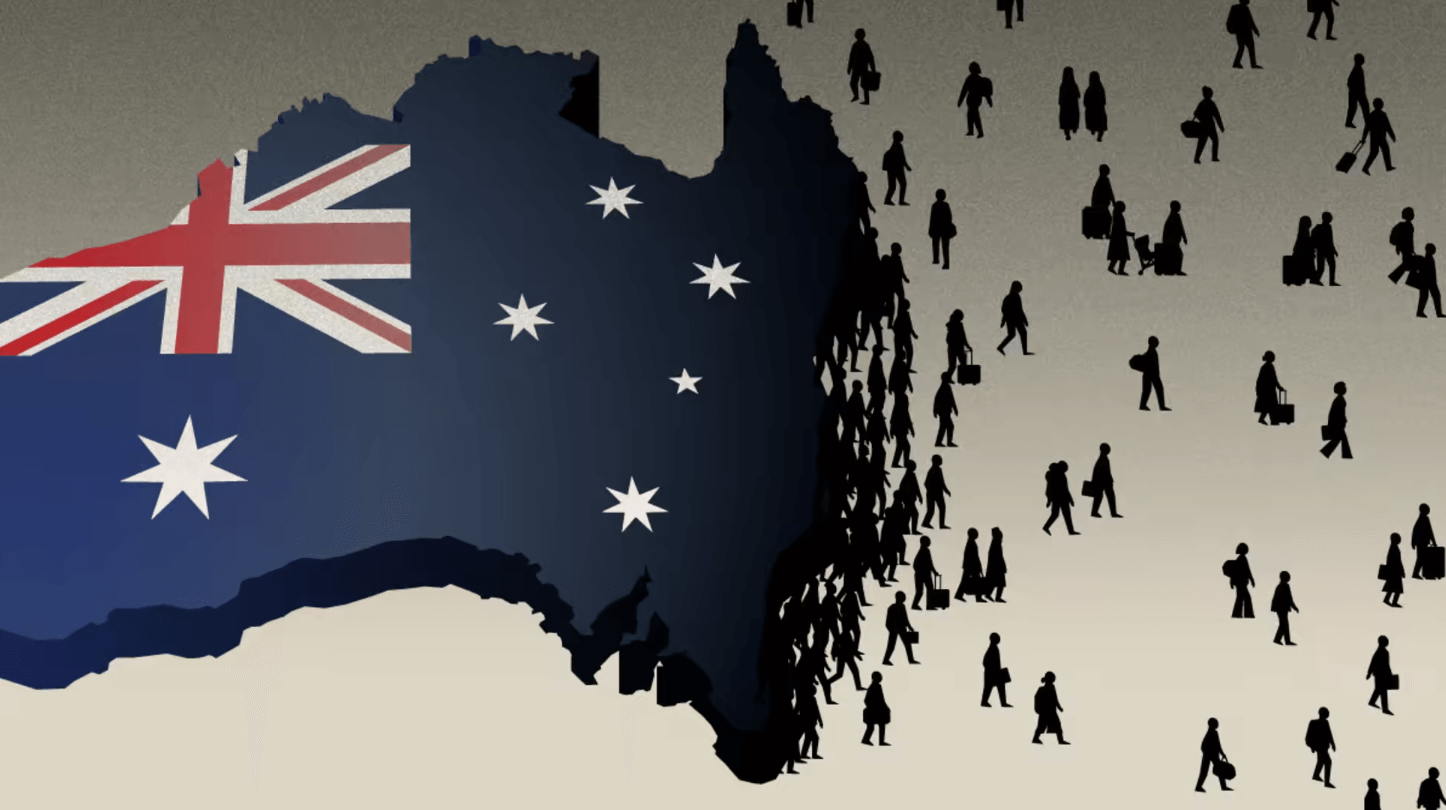
The government of Australia introduced a new federal budget for 2022-23. The budget includes additional measures and resources dedicated to increasing skilled migration to the country. Some of these measures will include:
Overall, the Budget puts an emphasis easing critical skills and labour shortages in Australia.
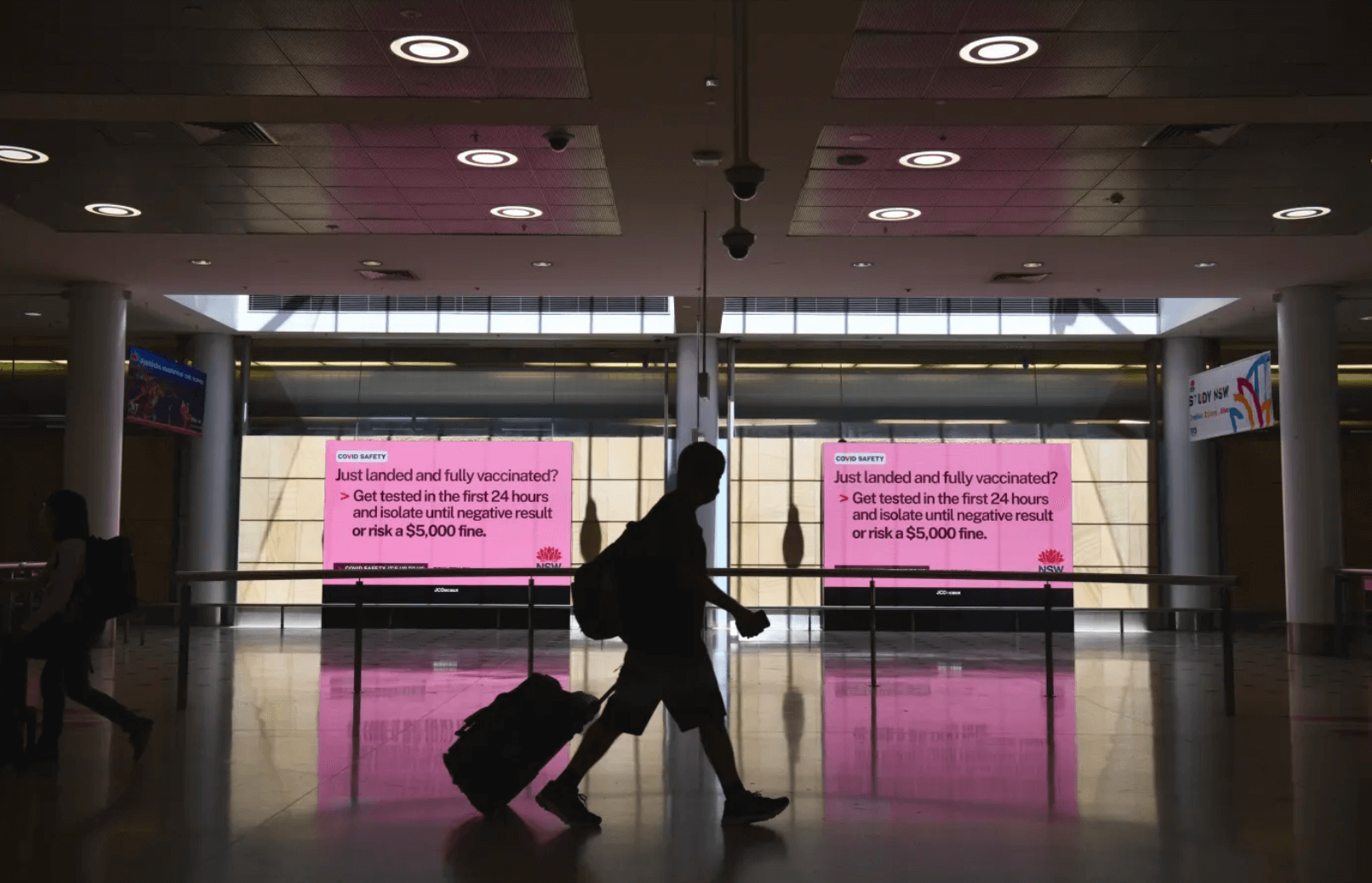
Australia’s permanent migration intake will be increased and visa processing times will be turbocharged with $36.1 million to fund hundreds of extra staff in Octobers federal budget.
The increase will bring the permanent migration rate for 2022-23 to 195,000 places, including an additional 9000 places for regional visas within the skill stream for a total of 34,000.
The number of state and territory visas will also see a massive increase from 11,200 last year to 31,000 this year.
Post-study work rights for international students will also be extended from two to four years for bachelor’s degrees, three to five years for master’s degrees, and four to six years for PhDs.
The former Coalition government had cut migration program funding to the Home Affairs Department by $875 million over four years while keeping the 160,000 number unchanged, leading to major blowouts in visa processing times.
“We understand that when people wait and wait, the uncertainty can become unmanageable,” Mr Giles said.
Home Affairs Minister Clare O’Neil said the increases were essential to tackle the skills shortage.
“This is very real and it is affecting the lives of Australians,” she said.
“Teachers at the end of their tether. Nurses who cannot work the double and triple shifts they have been pulling for the last two years. Funerals being delayed. Flights being cancelled because there aren’t enough ground staff. Fruit is rotting on trees in our regions because there’s no one to pick it.”
Ms O’Neil stressed “our focus is always on Australian jobs first”, but the impact of Covid had been “so severe that even if we exhaust every other possibility, we will still be many thousands of workers short, at least in the short term”.
“I want emphasise that one of Labor’s priorities is to move away from the focus on short-term migrants, toward permanency, citizenship and nation building,” she said.
Labor says the changes “could mean thousands more skilled professionals settling in the country, this year”.
“This is about making the big switch to an immigration program that demonstrates who we are and what we are about,” Ms O’Neil said.
“This is a turning point in our history as momentous as the post war ‘populate or perish’ program that was the foundation of our post-war reconstruction, nation building and national security.
“Our immigration system can be a powerful promoter of Australia’s open, free, prosperous, democratic society around the world, so let’s start giving that system the love and care that it needs.”
The Albanese government has also announced a review of Australia’s migration system to report by the end of February 2023.
The review will “outline the objectives of our immigration system and guide future reform — with a focus on Australian productivity, unlocking the potential of all migrants, the need for a streamlined and internationally competitive visa process, and sponsorship opportunities for emerging jobs and industries”.
“The Albanese government has ramped up activity to accelerate processing times and end the uncertainty for those who have been waiting a long time for a visa decision,” he said.
“The Department of Home Affairs has already added 260 more staff to support visa processing, and more are being recruited and trained in the coming weeks and months.”
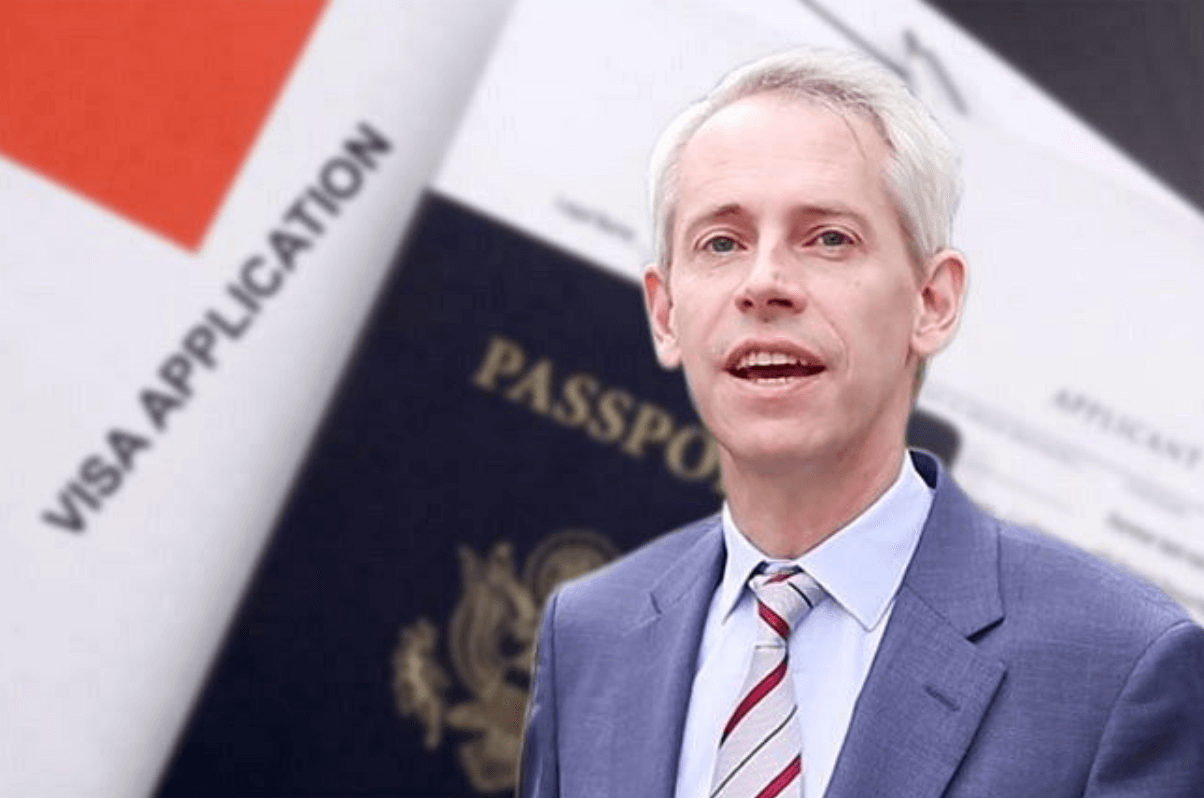
Since late 2021, both the former Coalition Government and the new Labor Government have been seeking to boost immigration levels.
This was mainly to address labour shortages but also to assist the international education and tourism industries.
By the end of August 2022, the overall volume of arrivals and departures had returned to just over half of pre-pandemic levels.
Long-term and permanent movements, for which we only have data to the end of July, has returned gradually driven mainly by overseas students. Net long-term and permanent arrivals from November 2021 to July 2022 exceeded departures by 115,580.
The most significant change has been the movement of Australian citizens which in volume terms is around three-quarters of pre-pandemic levels.
Since November 2021, departures of Australian citizens have exceeded arrivals by an extraordinary 312,660. In the period from November 2017 to August 2018, the net movement of Australian citizens was only negative 173,370 while for the period November 2018 to August 2019, the net movement of Australian citizens was negative 138,300.
While the large excess of departures over arrivals is most likely Australians taking a northern hemisphere holiday, there would also be a component that is Australians taking up longer-term job and career opportunities overseas. The extent of this may be revealed in the next few months but is likely to be contributing to labour shortages in Australia as well as having a negative impact on net migration in 2022.

Migration has made a vital contribution to Australia’s economic development over recent decades. Migrants have lifted the level of skills in Australia, facilitated the transfer of knowledge and international connections to Australian workers and businesses, and met around a third of increased skills requirements in the economy.
It is not surprising, therefore, that Australia’s strict COVID-19 border closures weighed heavily on the economy. Around 500,000 temporary migrants left Australia during the pandemic, while it is estimated that Australia missed another 600,000 migrants that would have otherwise arrived. This net impact has been felt acutely across the international education, trades, technology, hospitality, and aged care sectors.
Due to border closures, Australia was slow to welcome migrants back to its shores, and the processes to do so have been found with visa wait lists and times ballooning this year.
The federal government announced at the Jobs and Skills Summit a plan to address the visa backlog, to boost Australia’s migration program in the short term, and to set the policy guiderails for the long term. In the short term, the total permanent migration visa cap will increase from 160,000 to 195,000 this year. This is critical to increase the capacity of the system to ease current backlogs and address critical skills needs. The government will also adjust some of the rigidities in the skilled migration system so that businesses can get the skills they need, and migrant workers’ rights are properly protected at the same time.
The government will use a review of the purpose, structure, and objectives of Australia’s migration system to set the parameters for more substantive policy change over the longer term. This is critical if Australia is to have a coherent, globally competitive, and sustainable migration system.
In addition to bringing coherence, the review will need to grapple with how to bring about much needed modernisation of the migration system to keep pace with rapid change in technology and the labour market. This starts with a system that is focused on skills rather than occupational definitions that are far too constraining and cumbersome to update against rapidly evolving skills demand in a contemporary labour market.
As disruptive as COVID-19 has proven to be for Australia’s migration program, it has presented an opportunity for a forced reset and recalibration of migration settings. Historically, Australian governments have adapted policies well in response to external shocks. Policymakers must do so again to continue the vital contribution of migration to Australia’s economic development for the decades to come.

COVID-induced labor shortages push Prime minister Albanese to raise migration
MELBOURNE, Australia — The proliferation of “For Lease” signs and empty office spaces in Melbourne are just some of the scars from the world’s longest COVID lockdown in Australia’s second largest city.
The capital of the state of Victoria still needs a helping hand, even as the pandemic subsides around the world. A statewide rebate scheme was reintroduced last month to support Victoria’s COVID-ravaged entertainment, hospitality and tourism sectors.
But the city, the state, and the nation now face an altogether different problem. Two years of hard border closures have left businesses scrambling to fill half-a-million job vacancies in a country once considered an “immigration nation.”
“Everywhere I’ve been around the state over the last six weeks, whether it has been in metropolitan or regional Victoria, the one issue which is top of the pile is access to workers,” said Paul Guerra, CEO of Victorian Chamber of Commerce and Industry, the state’s biggest business lobby.
“There are so many jobs, we are hearing from businesses, that are unfilled. The only way to fill these shortages is through migration,” he told Nikkei Asia. “For Australia, this is now urgent.”
Nearly half of all Australians are first or second-generation immigrants. Before the pandemic, the island continent had the second largest immigrant workforce in the Organization for Economic Cooperation and Development.
Now, Australia has the second worst labor shortage in the developed world. The shortages are widespread, spanning the nation’s hospitality, child care and aged care, health, education, and IT sectors.
Melbourne, which saw a record number of people move away to escape the city’s grueling lockdowns, is reeling from the scarcity of workers.
This crisis, arguably, has been a long time coming.
The country has been heavily reliant on immigration to boost its economy. A “productivity revolution” from the 1980s until the early 2000s saw Australia deregulate and reform its economy, said Shane Oliver, AMP Capital’s chief economist.
By the mid-2000s, “productivity growth slowed right down but we ramped up the levels of immigration … so if you look at per capita GDP growth it had stepped down a notch,” Oliver told Nikkei Asia.
“Quite frequently in the run-up to the pandemic, we had per capita recessions which were unheard of before, but it was smoothed over by very strong population growth,” he said. “We haven’t focused as much as we should have on the productivity side of the equation.”
Faced with acute worker shortages, the federal government led by Prime Minister Anthony Albanese is embarking on the largest overhaul of the country’s permanent immigration program since the end of World War II.
“We need to be more attractive in the global labor market for the skills that we need,” Albanese said in September. “One way to do that is by providing that path to permanency, which is what we intend to do.”
The center-left Labor government will increase Australia’s permanent immigration intake from 160,000 to 195,000 places in this month’s federal budget for the 2022-23 financial year.
But as the race for talent is heating up around the world, some experts argue the Albanese government will struggle to attract immigrants back to a country dubbed “Fortress Australia” throughout the pandemic for its hard-line response to prevent the virus from hitting its shores.
The chief of the country’s largest airport publicly called last month for a “brand Australia” reboot. Sydney Airport CEO Geoff Culbert argued that many people abroad weren’t even aware Australia had reopened, and the country’s hard border policies had “not been helpful” in re-attracting overseas visitors.
But the government hopes its suite of changes will bring migrants back Down Under.
The Albanese administration has indicated it will raise the temporary migrant income threshold amid union concerns over workers’ pay and conditions, while graduates from Australia’s universities who are studying in-demand industries will be able to stay in the country for an extra two years. Some $36 million Australian dollars ($22 million) is also being allocated to reducing visa processing times.
“We have got to make sure the visa package is as straightforward and quick as it can be… We have been waiting too long for the backlog to be cleared,” he said.
Australia’s largest consulting firms, including EY and Deloitte, have cited visa processing delays as a major roadblock to securing international talent for thousands of open roles.
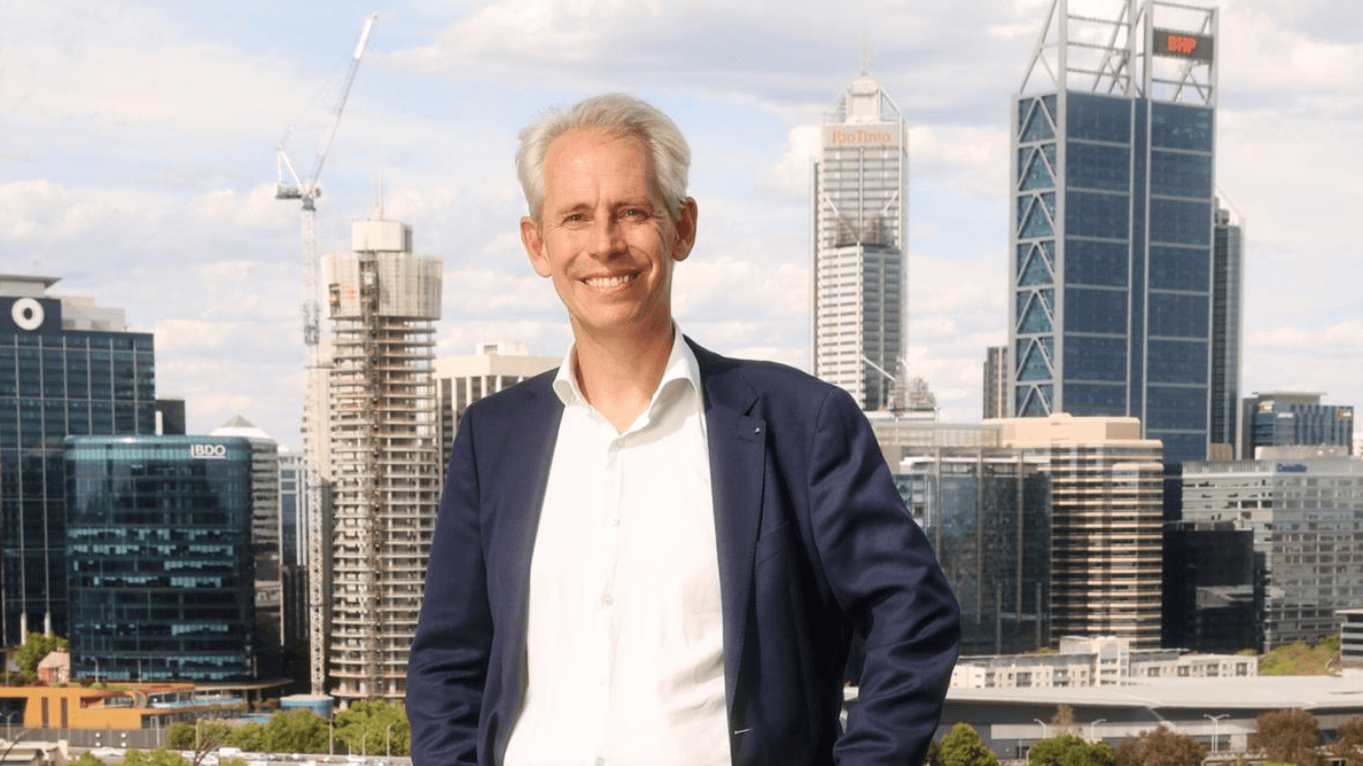
Australia’s Immigration Minister Andrew Giles has assured Australian businesses crying out for workers that the visa application backlog inherited by the Albanese Government should be at a “manageable” level by Christmas.
He wouldn’t specify the target he hoped the Department of Home Affairs would reach by the year’s end, but was confident processing times were reducing and business were “starting to see those results now”.
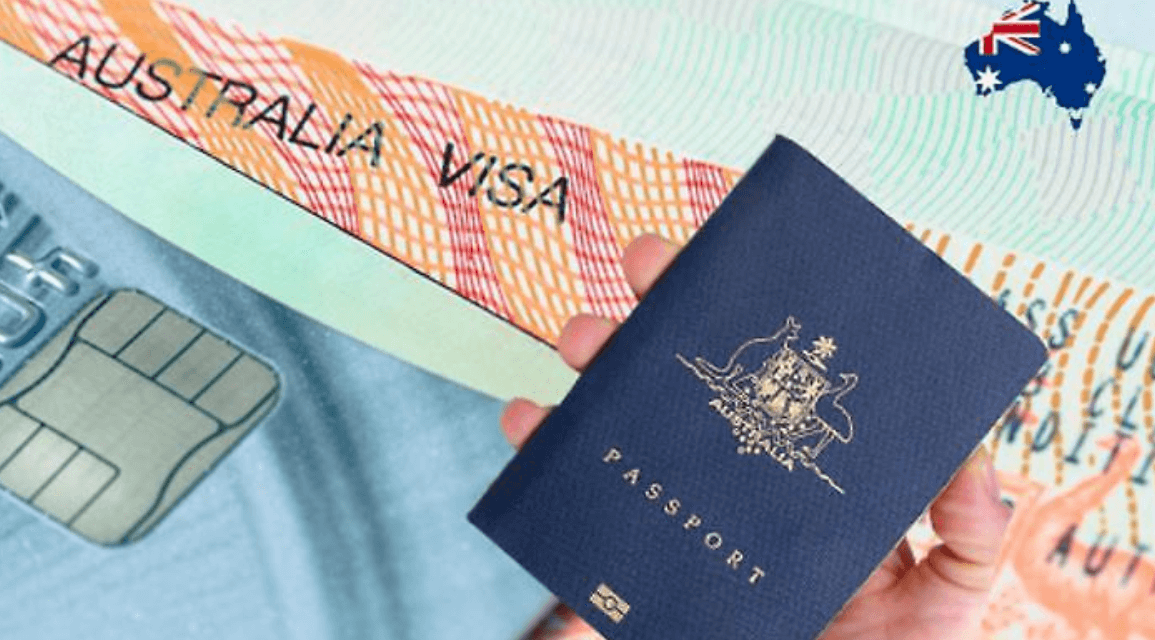
The Albanese government’s announcement that it will increase the intake of permanent migrants from 160,000 to 195,000 over 2022–23 should set Australia on a path of faster population growth. This growth will be significantly faster than that of Australia’s major trading partners, such as China and Japan, and faster than most developed nations, where populations are projected to decline — with the exception being traditional migrant settler nations.
The populations of most of these nations are projected to both age faster than Australia and to shrink as deaths gradually exceed births for the foreseeable future. According to UN population projections, the median age of all developed nations is now well past the sweet spot of 25–35 and over the next decade or two, most will approach a median age of 45–50 and beyond. Ageing and shrinking populations will slow economic growth, not least by putting downward pressure on participation rates and productivity.
Australian treasurers have been slow to recognise the impact of ageing on productivity. In his 2002 and 2007 Intergenerational Reports, former treasurer Peter Costello identified many negative impacts of population ageing but insisted that there would be no impact on productivity, which he assumed would remain at the 30-year average of 1.75 per cent per annum.
In 2010, former treasurer Wayne Swan pulled this back to 1.6 per cent per annum while, during their respective terms as treasurers, Joe Hockey in 2015 and Josh Frydenberg in 2021 assumed Australia could achieve long-term productivity growth of 1.5 per cent per annum.
Current Treasurer Jim Chalmers has forecast a productivity growth rate of 1.2 per cent per annum in his forthcoming Intergenerational Report in 2023. But without major structural reform, even this is likely to be highly optimistic given the experiences of nations further down the ageing path.
Population ageing will intensify the global competition for young, skilled migrants, so the design of immigration policy will be crucial. Australia attracts skilled migrants in three main ways: a points system for independent migrants, nominations by state governments and employer-sponsored migration.
The government has significantly increased places for state government-nominated visas. But state governments are finding it difficult to attract enough applicants with targeted skills, particularly in areas such as health, education, information and communication technology and traditional construction trades.
Prime Minister Anthony Albanese said in September 2022, “We need to be more attractive in the global labour market for the skills that we need, and one way to do that is by providing that path to permanency (permanent residency), which is what we intend to do.”
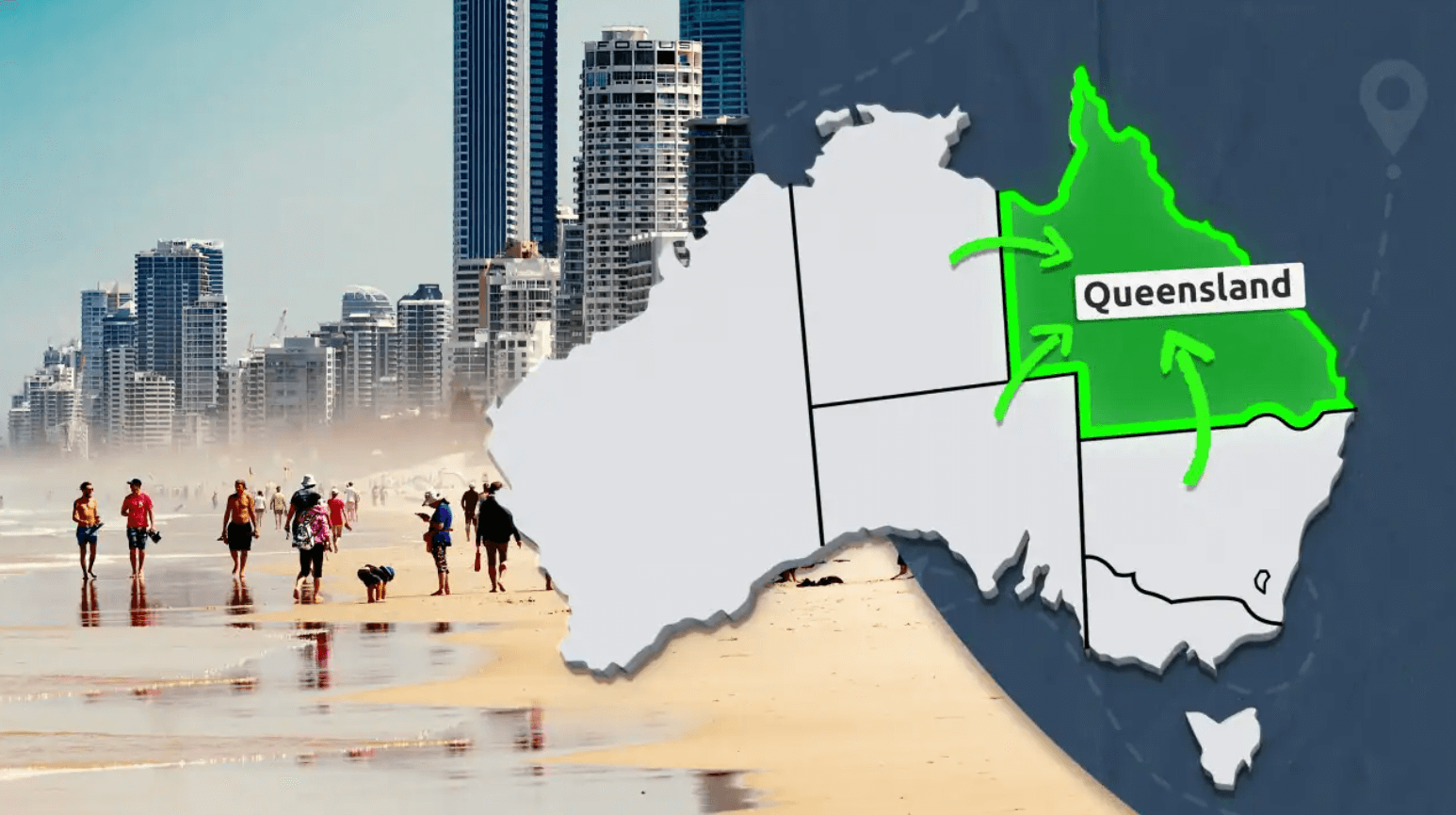
Well, it’s not quite everyone, but Census data released this week reveals in the five years to 2021, more people moved to Queensland from within Australia than any other state or territory.
Census data shows more people moved interstate to Queensland than any other state or territory in the five years to 2021.
The sunshine state’s net population gain from those moving within the country eclipsed that of Tasmania and the ACT in the five years leading to 2021, which were the only other two states to record an increase from internal migration.
Queensland’s population increase from residents moving interstate was more than 10 times larger than that of the ACT – a net gain of 107,500 compared to 10,600. Tasmania recorded a population boost of more than 15,300 people.
Aude Bernard, a demographer at the University of Queensland, said the movement of people within Australia to the state was not a new trend.
“Queensland has been the main destination in Australia since the 1970s and probably before that – so really, this is just an exacerbation of existing trends,” she said.
Ms Bernard said affordability, weather and lifestyle factors were big drawcards for those heading to the state.
“I think also what has changed is people have really realised that Brisbane is a viable destination – that it has a strong economy. There are a lot of events and services that people can work in, and this has obviously been made easier by teleworking to some extent,” she said.
Opportunities and the lifestyle
Freelance photographer Matthew Poon and his family made the move to Brisbane from Perth in August last year and he said they are loving the change.
The main reason for the move was his wife, Illiona Quek, wanted a new challenge with her work in the finance industry.
“She was looking for opportunities to grow and develop her career and there just weren’t many options in Perth. There are just way more opportunities in Brisbane, Sydney and Melbourne,” he said.
Ultimately they preferred the idea of Brisbane, so Mr Poon’s wife jumped on a plane to meet with potential employers and came back with three attractive job offers.
Ms Quek is not the only newcomer to the state in her investment manager role.
“Half of the staff are pretty much from Sydney or Melbourne as they all moved over here during the pandemic,” she said.
Other drawcards
The family are enjoying living in Queensland.
They have purchased an apartment in an inner Brisbane suburb and enrolled their two children in a nearby school.
While Mr Poon said their home probably cost a little more than it would have if they bought the same thing in Perth, it was much less than they would have had to spend if they chose to move to Melbourne or Sydney.
He said the amenities in Brisbane were much better than those in Perth, especially the public transport network and local government facilities such as children’s playgrounds.
“And there’s just a lot more to do in close proximity of where we live in Brisbane when compared to Perth,” Mr Poon said.
He loves that he can wear shorts in winter in Queensland and he adds that his daughters are also experiencing benefits.
Mr Poon, who had built connections and a reputation as a freelance photographer in Perth, said work has picked up in recent months after having to re-establish himself in the new location.
He said he has used the adjustment period to take up more of the parenting and domestic responsibilities.
The family is undecided how long they will remain in Brisbane.
While the idea of returning to Perth to be closer to Mr Poon’s extended family is always present, the prospect of being in Brisbane when the city hosts the 2032 Olympics is also appealing to the couple.
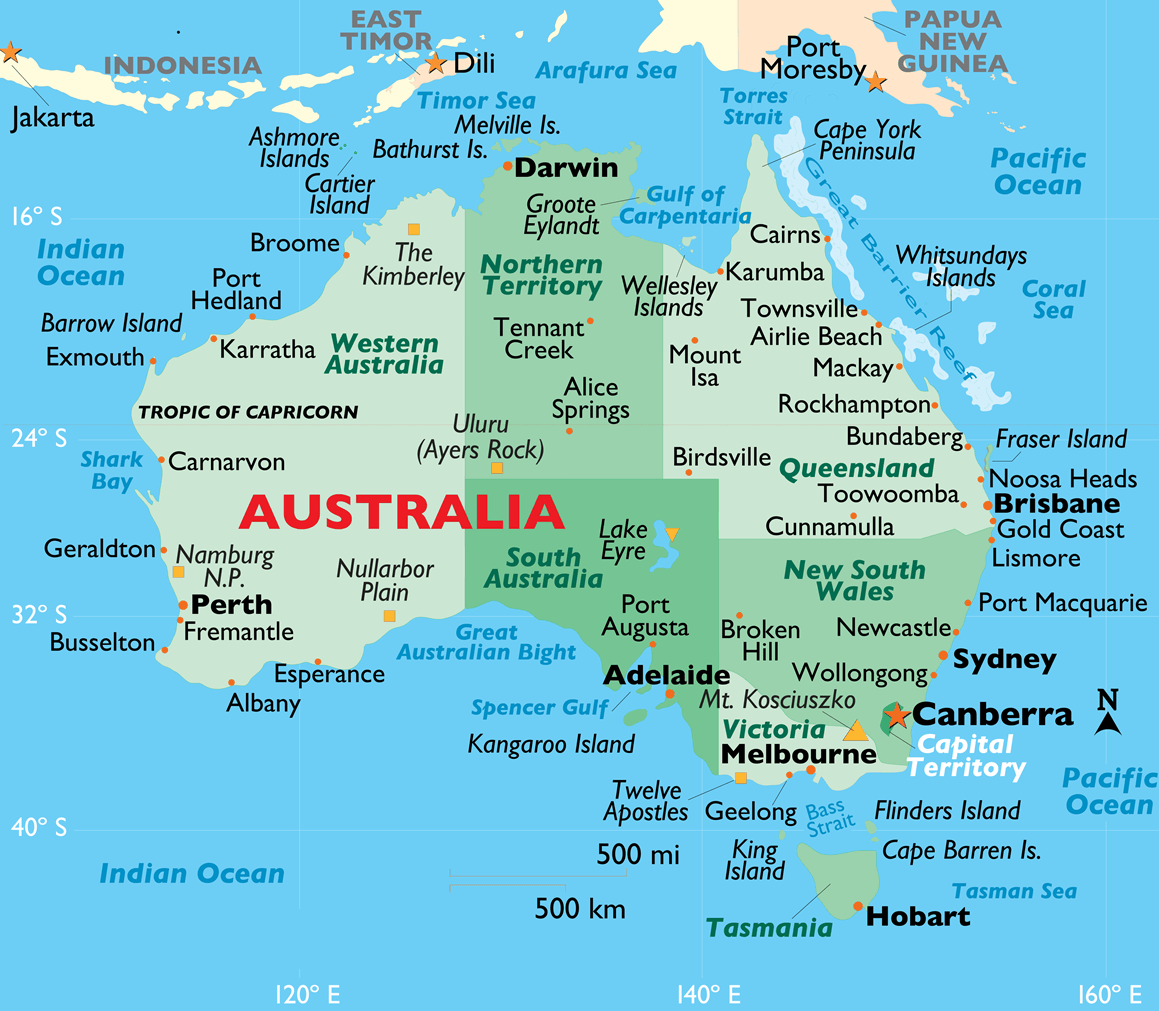
If you are interested in applying for a general skilled migration visa to Australia, it is important to have a good understanding of the skilled visa options and how the migration points test works, so that you can maximise your chances of being eligible to apply for a skilled visa.
A general skilled migration visa is an option available to skilled workers who are seeking to qualify for a skilled visa independently, or under a state or family sponsorship. It is an alternative to an employer sponsored visa.
One of the key criteria to qualify for a general skilled migration visa is the points test (a criterion that does not apply to employer sponsored visas). This is often the most challenging aspect for prospective skilled visa applicants to overcome when seeking an invitation to apply for the relevant skilled visa.
If you are considering applying for a general skilled migration program visa, an important concept to understand is the Expression Of Interest (EOI).
If you are considering applying for a general skilled migration visa, it is important to be aware that for certain visas in this visa class, you will first be required to lodge an EOI with the Department of Home Affairs (the Department) through SkillSelect. The EOI is not a visa application, but rather, it is the process by which you can express your interest in applying for the relevant skilled visa (It’s important to note, that there is NO fee to submit an EOI).
This requirement applies to the following skilled visa subclasses:
Let’s take a brief look at each of these visas below:
The ‘subclass 189 federal sponsored visa’ grants automatic permanent residence in Australia. It is subject to nil visa conditions or obligations. For this reason, it is often considered to be the most flexible of the skilled visa options available.
A subclass 189 points-based visa allows you to live and work in any state or territory permanently.
The ‘subclass 190 state sponsored permanent residence visa’ is another points-based visa for which invitations are issued throughout each month by individual states and territories. One of the benefits of applying for state nomination is that you will be granted an additional 5 points.
An important aspect to consider, which does not apply to the subclass 189 visa is that there is an added step in the application process. In this case, you must also apply for nomination approval to a state or territory government. Only upon receipt of an invitation from the relevant state or territory to which you apply can you then apply to the Department for the visa itself.
Your obligations as a subclass 190 visa holder are that you must commit to your nominating jurisdiction’s obligations and commit to residing in your nominating State or Territory for two years from visa grant.
The subclass 491 visa is also points-based. It is a regional state or family sponsored visa with a term of five years. The Department issues invitations for family sponsored EOI applications only (in invitation rounds). Invitations for state sponsorship are issued by individual states and territories throughout each month. This will grant you an additional 15 points for the nomination.
Being a provisional visa, this means it provides a pathway to permanent residence in Australia with the Subclass 191 Permanent Residence (Skilled Regional) visa, subject to meeting specified requirements.
Be mindful that as a subclass 491 visa holder, you must abide by visa condition 8579, which requires you to live, work and study in a designated regional area of Australia. For migration purposes, most locations of Australia outside of major cities (Sydney, Melbourne, Brisbane, Perth, etc.) are classed as regional areas.
If your EOI is successful, you will receive an invitation to apply for the visa, as specified in the invitation letter. This then enables you to proceed with lodgement of your visa application (provided you meet all other visa lodgement and visa grant requirements).
Please note, the below State and Territory program updates is a general overview only. It does not take into account any of your personal circumstances. You must check the State/Territory information carefully to ensure you can meet all the requirements for nomination.
Australia is currently facing a shortage of skilled migrants to fill workforce demands. In response, states and territories have been easing the conditions of their visa programs to help attract skilled workers from overseas.
Below is the monthly update for some of the State and Territory opportunities available.
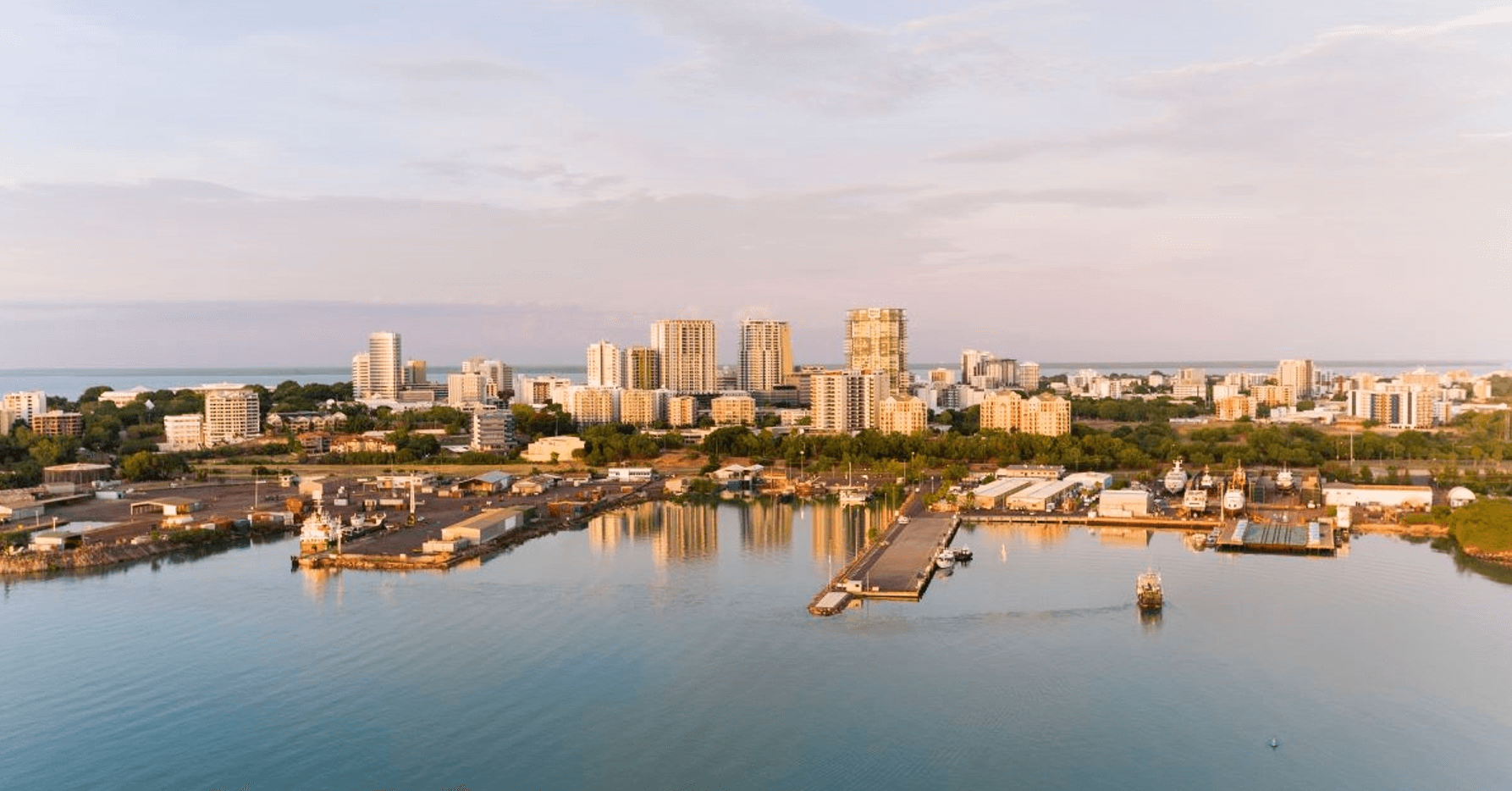
Program Status Update
People residing offshore are now eligible to be considered for Northern Territory (NT) nomination. Invitations to apply for Northern Territory nomination will be via the ranking system.
The ‘Northern Territory Offshore Migration Occupation List’ identifies the occupations in current demand in the Northern Territory. This List is important if you want to apply for Northern Territory nomination for either a:
The ‘Northern Territory Offshore Migration Occupation List’ is only applicable for those applying for NT nomination from outside Australia, under the Priority Occupation stream.
Please note: The Northern Territory government has advised that offshore applicants will generally only be offered a Northern Territory nomination for a subclass 491 visa. Subclass 190 nominations will only be offered in exceptional circumstances, such as cases where the applicant has strong connections to the NT.
The NT advises eligible applicants to apply as soon as they meet the eligibility criteria. To receive a nomination from the NT Government, you must:
Before submitting an EOI for The Northern Territory, applicants should check that they meet all eligibility requirements.
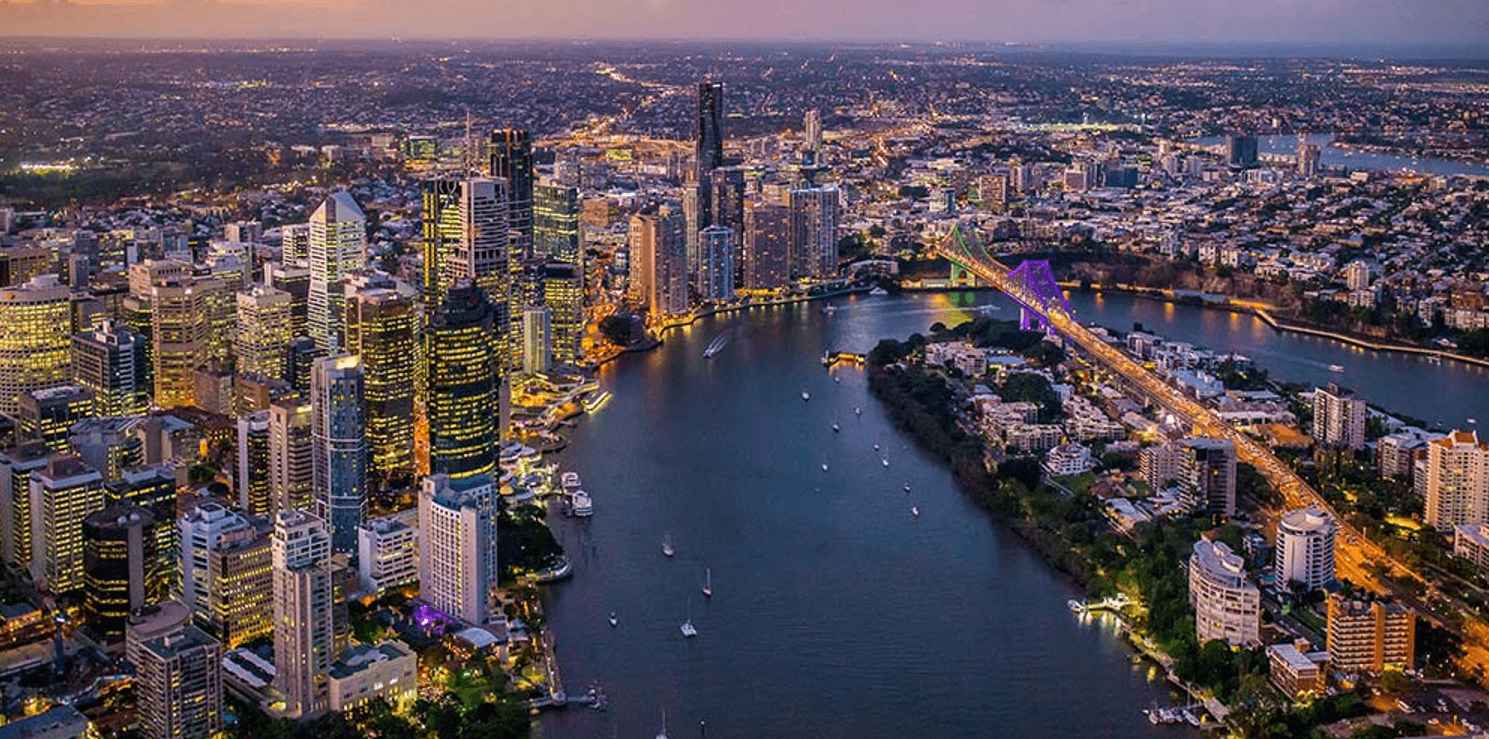
Program Status Update
To manage Queensland’s COVID recovery response, applicants currently residing offshore are now able to apply.
Depending on your occupation and situation, there are two state nomination options available for skilled migrants through Queensland.
For Queensland state nomination, prospective applicants must meet the Department of Home Affairs requirements, state-specific occupation requirements and have skills in an occupation that is available on the Queensland Skilled Occupation List.
You may undertake employment once onshore in Queensland through:
Offshore applicants meeting the minimum published requirements can now lodge a Registration of Interest (ROI).
Migration Queensland, the state government agency responsible for skilled visa nomination, has stated they will only accept a brand new EOI submitted on Skillselect from 16 August 2022. Updating existing EOI’s submitted prior to 16 August 2022 will not be invited.
The agency also requests all applicants to ensure they have carefully read and understood the new criteria relevant to their stream or pathway, and that they meet the criteria before submitting an Expression of Interest (EOI).
The 2022-23 Skilled Migration Program will be open to both onshore and offshore applicants and provide pathways for skilled workers, graduates, and small business owners.
Before submitting an EOI for Queensland, applicants should check that they meet all eligibility requirements.
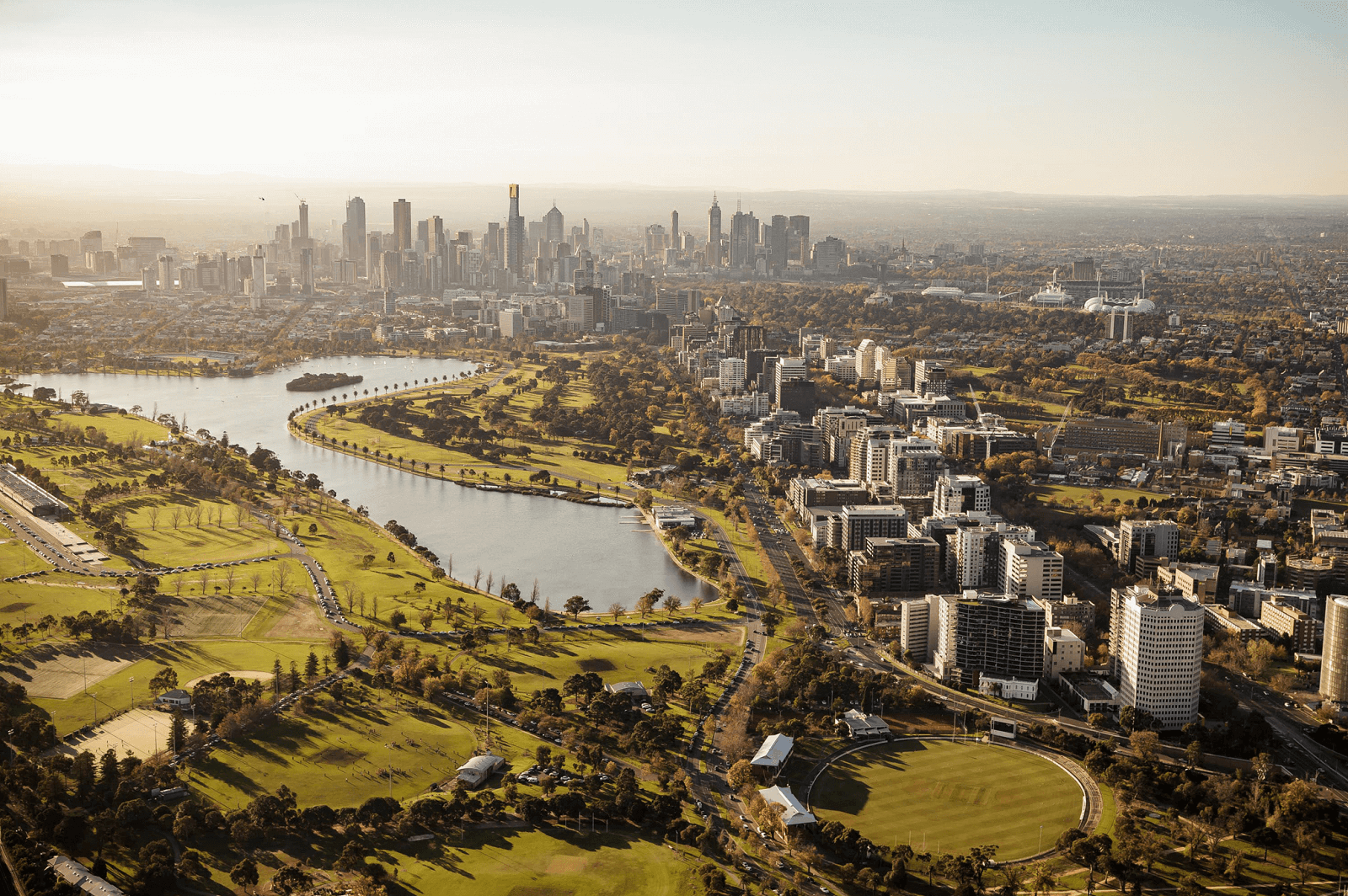
Program Status Update
Now open to offshore applicants, the program provides skilled migrants with a pathway to permanent residency in Victoria. The skills that successful applicants bring to Victoria benefits employers and the broader Victorian economy.
The program provides two visa pathways.
The Skilled Nominated visa (subclass 190) is a permanent visa for skilled migrants to live and work anywhere in Victoria. The Skilled Work Regional (Provisional) visa (subclass 491) is for skilled migrants to live and work in regional Victoria and provides a pathway to permanent residency through the Permanent Residence (Skilled Regional) visa (subclass 191).
As with previous years, applicants will first need to submit a Registration of Interest (ROI) and then be selected on competitive merit to apply for visa nomination.
Both onshore and offshore applicants are eligible to submit a Registration of Interest (ROI) for both the subclass 190 and subclass 491 visas.
This is a significant change from the 2021-22 Skilled Migration Program, which did not allow applications from individuals overseas. Additionally, the new program is a great opportunity for applicants who work in a variety of occupations, particularly since the 2021-22 program was previously aimed at applicants in science, technology, engineering, mathematics and medicine (STEMM).
Before submitting an ROI for Victoria, applicants should check that they meet all eligibility requirements.
ROIs will be assessed until May 2023.
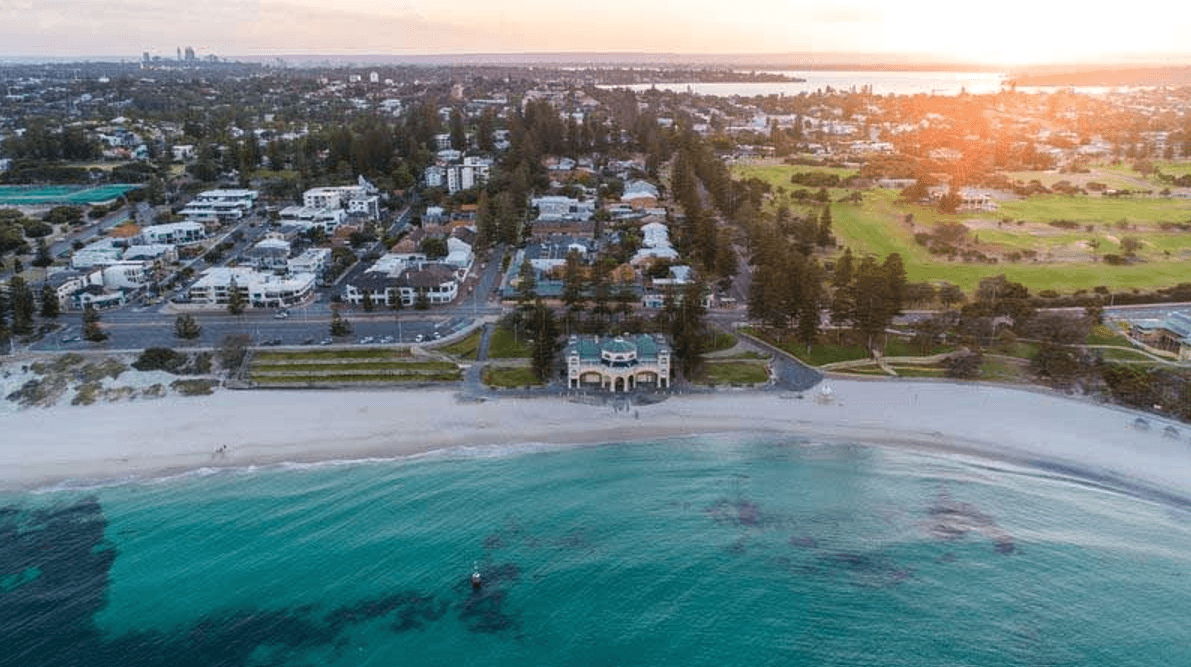
Program Status Update
People residing offshore are now eligible to be considered for Western Australia (WA) State nomination. Invitations to apply for WA State nomination will be via the ranking system.
The Western Australian Skilled Migration Occupation List identifies the occupations in current demand in Western Australia. This List is important if you want to apply for Western Australia nomination for either a:
Western Australia has increased occupations eligible for skilled migration by roughly 60 per cent for the 2022-23 program. New occupations have been added to both the Western Australian Skilled Migration Occupation List Schedule 1 (WASMOL Schedule 1) as well as the Western Australian Skilled Migration Occupation List Schedule 2 (WASMOL Schedule 2). In total, more than 100 occupations were added, including 46 in the health care sector, bringing the total to 276 occupations.
Some examples of the newly added jobs include:
For more information, consult the combined list of eligible occupations.
From 1 July 2022, the WA Government is also temporarily waiving the $200 application fee. Additionally, applicants who apply after this date will no longer need to provide proof of sufficient funds for WA State nomination.
Under the Western Australia Skilled Migration Program 2022-23, the English language requirement has also been reduced for applicants at the Manager and Professional occupation level. Applicants at this level will only need to demonstrate a “competent” proficiency in English.
Before submitting an EOI for Western Australia, applicants should check that they meet all eligibility requirements.
With world-class education, healthy job opportunities and strong public health management, WA is a safe place to live, work and study.
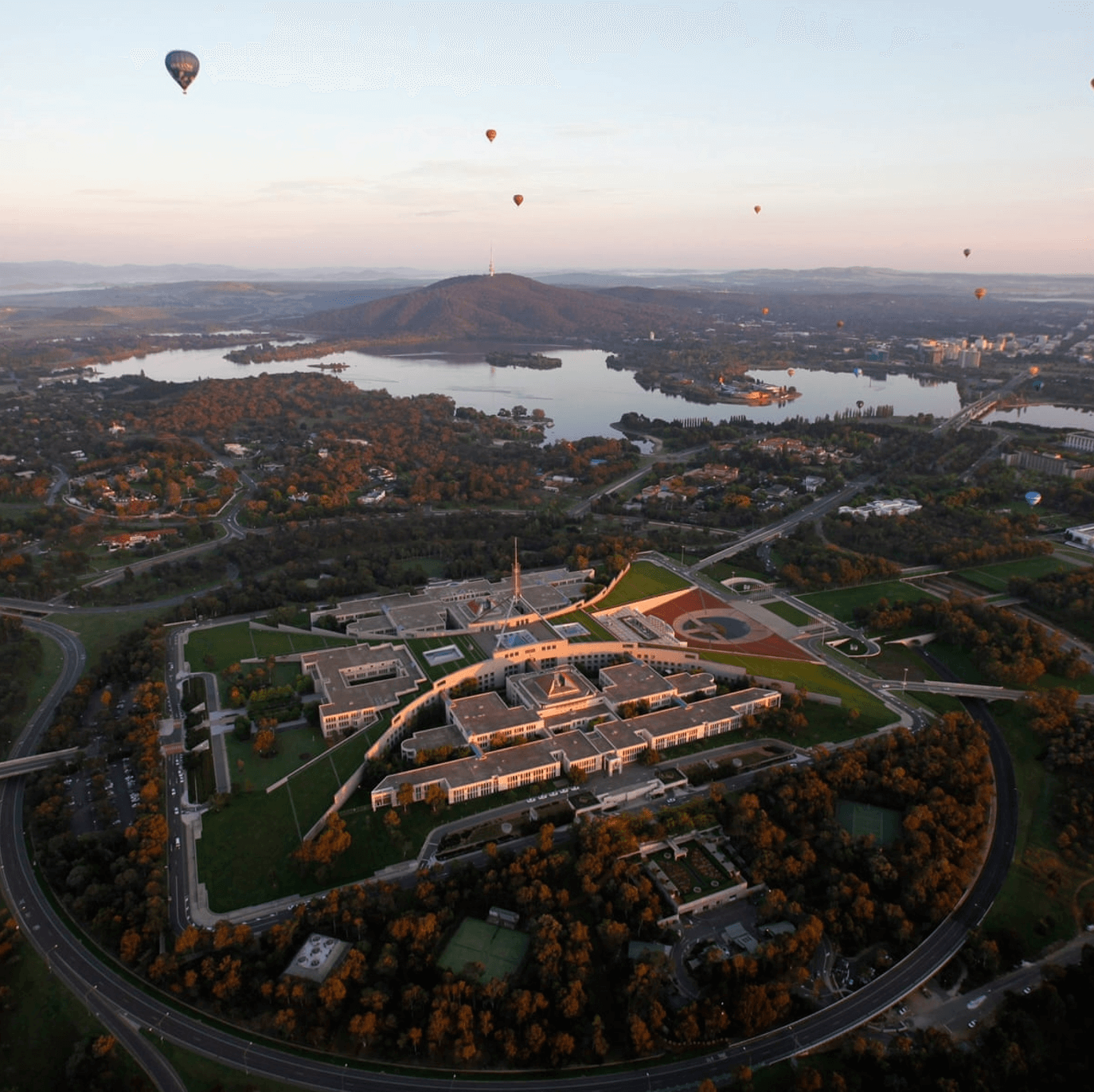
Program Status Update
The ACT Critical Skills List identifies the occupations in current demand in the ACT. This List is important if you want to apply for ACT nomination for either a:
The ACT Government will update this list every four months to make sure that the ACT Skilled Migration Program adapts and responds to the evolving critical skills needs of the ACT economy.
The Canberra Matrix is weighted to ensure that applicants who will make a positive economic contribution to the Territory and/or have demonstrated a genuine commitment to the ACT are more likely to be ranked and invited to apply for ACT nomination.
*ACT nomination does not guarantee a migration outcome. You must still meet the Department of Home Affairs criteria.
Every month, a certain number of nomination invitations are available (prorated on the annual allocation) to those working in the highest ranked Matrix in each occupation.
You can view the ACT’s most in-demand skills for skilled migration by consulting the ACT Critical Skills List.
Before submitting an EOI for The Australian Capital Territory, applicants should check that they meet all eligibility requirements.
Once you’ve submitted a valid Department of Home Affairs SkillSelect EOI, follow the ACT Government Process to apply for ACT nomination.
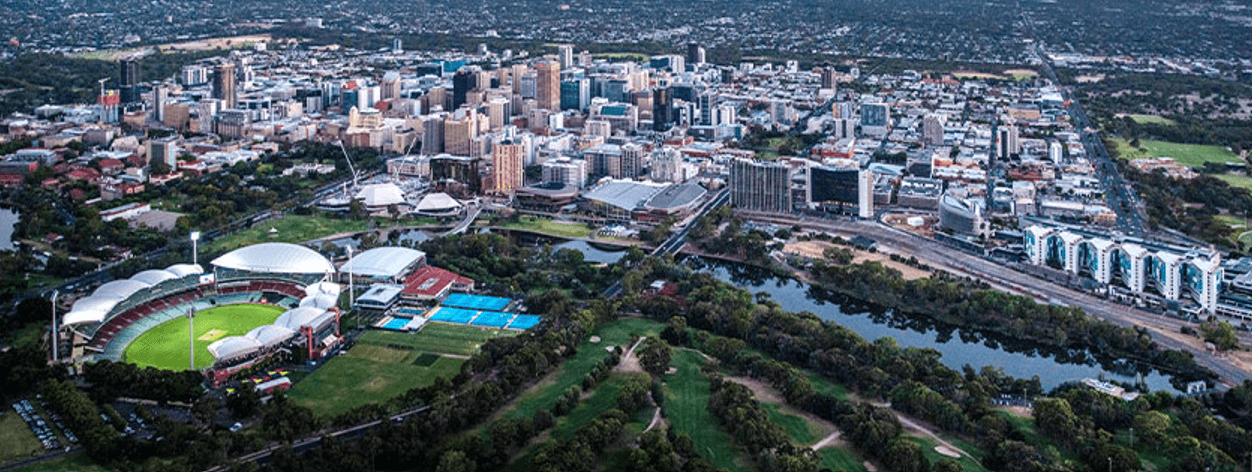
Program Status Update
To manage South Australia’s COVID recovery response, applicants currently residing offshore are still able to apply.
Depending on your occupation and situation, there are two state nomination options available for skilled migrants through South Australia.
For South Australian state nomination, prospective applicants must meet the Department of Home Affairs requirements, state-specific occupation requirements and have skills in an occupation that is available on the South Australian Skilled Occupation List. Offshore applicants meeting the minimum published requirements can now lodge an Expression of Interest (EOI).
There is an enormous range of occupations on South Australia’s Skilled Migration Occupation List in a range of industries – search for your occupation here.
South Australia will increase its nominations of offshore skilled migrants in 2022-23. This is in order to make entry to the South Australian labour market faster, due to urgent skills shortages.
To do this, South Australia will select offshore applicants to apply for state nomination from those who have submitted an Expression of Interest (EOI) through SkillSelect. Offshore applicants will not need to lodge a Registration of Interest (ROI) for this year’s program. South Australia will be nominating offshore applicants from over 470 occupations on South Australia’s Skilled Migration Occupation List. To be eligible, ensure all the information in your SkillSelect EOI is up to date and you have selected South Australia as your first preferred state or territory to move to in Australia.
Before submitting an EOI for South Australia, applicants should check that they meet all eligibility requirements.
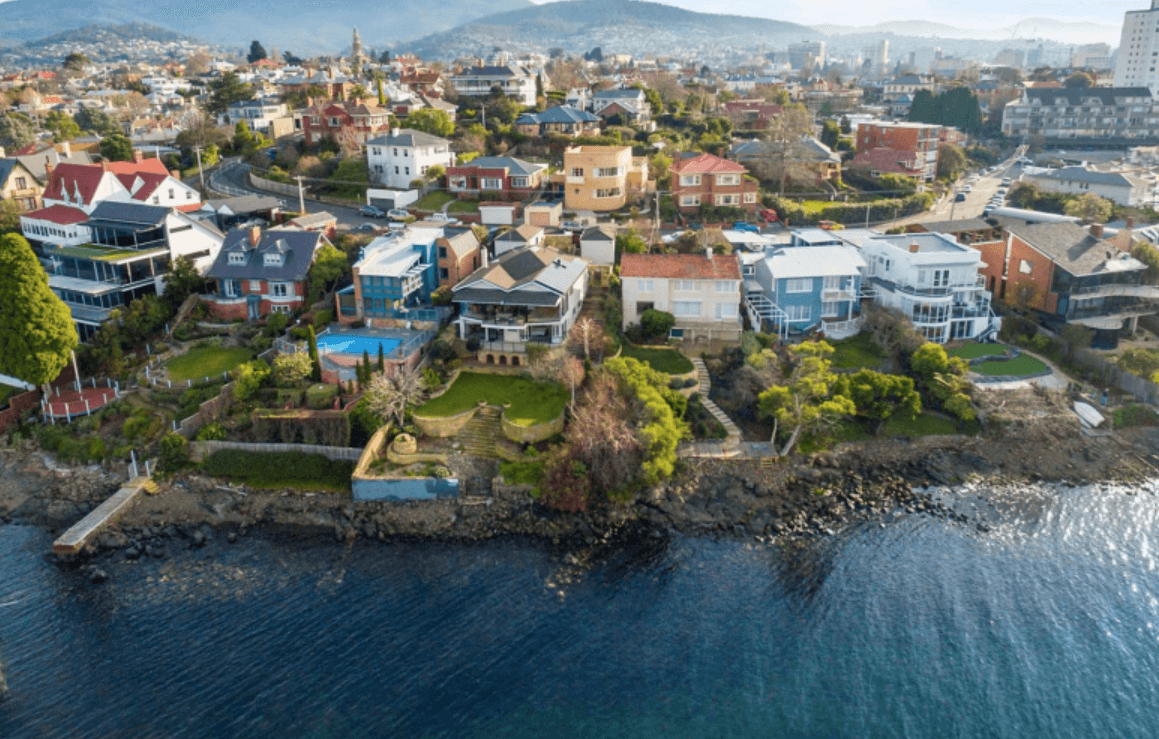
Program Status Update
Working in Tasmania
The two state nomination options available for skilled migrants through Tasmania are:
The Tasmanian State Nomination Skilled Migration Program supports Tasmanian businesses and increases the state’s working age population. It does this by attracting and retaining migrants with skills genuinely in need by employers, or with the capacity to settle in Tasmania through skilled employment in the long-term, and business activities that will increase employment opportunities.
Tasmania’s skilled migration program is for people wanting to move to the state who have skills that Tasmania need. Skilled migrants are attracted to Tasmania because of the state’s enviable lifestyle, career opportunities, affordable housing, reputable schools and a globally recognised university.
New Migration Tasmania Application Gateway update
The new Migration Tasmania Gateway Application Gateway, which will become the central portal for applying for Tasmanian skilled visa nomination, is currently being finalised and tested.
We expect the gateway to go-live in early December 2022. Until then the current interim ROI process remains in place.
Interim ROI process
The interim ROI process will remain in place until the Migration Tasmania Gateway is ready to be deployed.
All candidates who meet the minimum nomination requirements for one of the nomination pathways published on the Migration Tasmania website must seek an invitation to apply for nomination.
Candidates who have at least one gold attribute for their chosen pathway will be immediately invited to apply for nomination.
Candidates who have at least one green attribute for their chosen pathway are likely to be invited to apply for nomination within 2 weeks.
Candidates who have orange attributes may be invited to submit an application for nomination under the interim process which will be open until early December. This will be dependent upon the volume of registrations and number of priority attributes recorded.
If you are not invited to apply for nomination before 9 December 2022 your registration will expire, and you will need to register your interest in the new Migration Tasmania Application Gateway to be considered for a nomination invitation.
How many priority attributes will I need to be invited?
All candidates with at least one gold or green attribute will be invited to submit an application for nomination before the end of the interim period.
It is expected that there will be very high interest in the program and in the absence of any gold or green attributes only those ROIs with at least 6 orange attributes are likely to receive an invitation before the end of the interim period. As interim ROIs will only be held until 9 December 2022, you may wish to wait until the Application Gateway is launched in December before registering interest.
ROIs lodged in the Application Gateway, once launched, will he held for six months.
During this interim opening stage, all candidates who qualify for a visa will need to seek an invitation from Migration Tasmania before they can apply for nomination.
You can find a detailed step-by-step process on “How to Apply for Tasmania’s 2022-23 interim process” sections for each visa here.
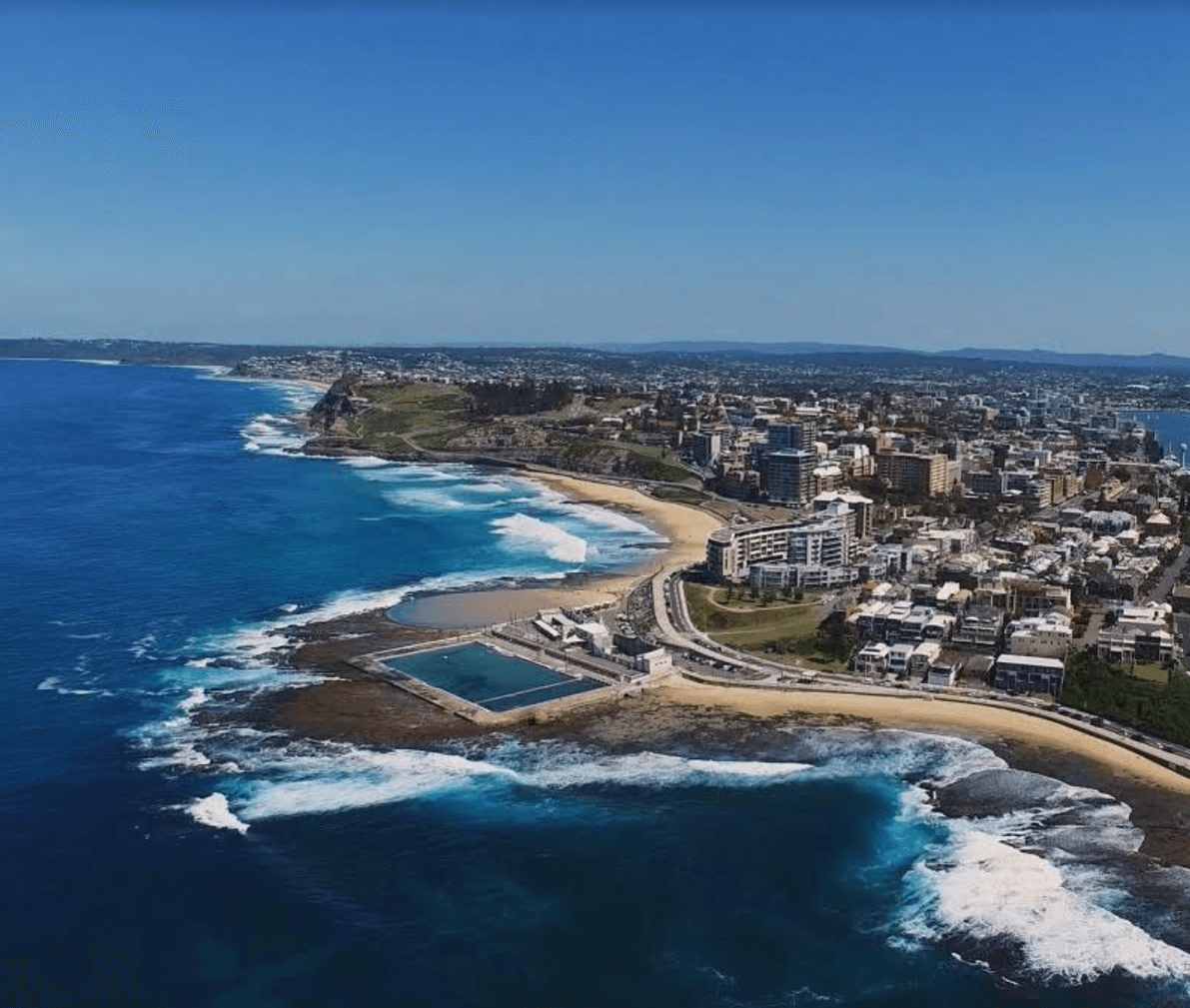
Program Status Update
The New South Wales government has invited applications from offshore migrants under the following nomination streams:
The NSW State Government announced that offshore applicants skilled in certain ANZSCO unit groups are still eligible for NSW nomination.
Offshore candidates criteria:
If you are residing offshore, you must:
*Please note: Invitation rounds occur throughout the financial year.
NSW invites and nominates Skillselect expression of interest (EOI) applicants at the Australian and New Zealand Standard Classification of Occupations (ANZSCO) unit group level. To be eligible for NSW nomination you must be skilled in an occupation that both:
It is important to note that not all occupations within ANZSCO unit groups identified on the NSW skills lists are eligible for the respective visa. Your eligibility will be determined by the Department of Home Affairs. It is your responsibility to ensure your occupation is eligible for the visa you are considering before obtaining a skills assessment.
For the 2022-23 financial year, NSW have introduced a new requirement regarding your Skillselect EOI. To be eligible for NSW nomination, your Skillselect EOI must be for one visa and for NSW only.
This means that if your Skillselect EOI has multiple visas and/or multiple states selected (this includes selecting ‘ANY’), your Skillselect EOI will not be considered for NSW nomination.
The skills lists for 2022-23 are available on the Investment NSW website. Additional ANZSCO unit groups will not be added this financial year, however, the skills lists are reviewed annually.
New requirements for minimum point scores and years of work experience have been introduced for 2022-23.
To be eligible for NSW nomination you must meet the minimum point score and minimum years of work experience in your occupation’s ANZSCO unit group.
For a further explanation of how the skills list works, see the Common questions about skilled visas page on the NSW Government website.
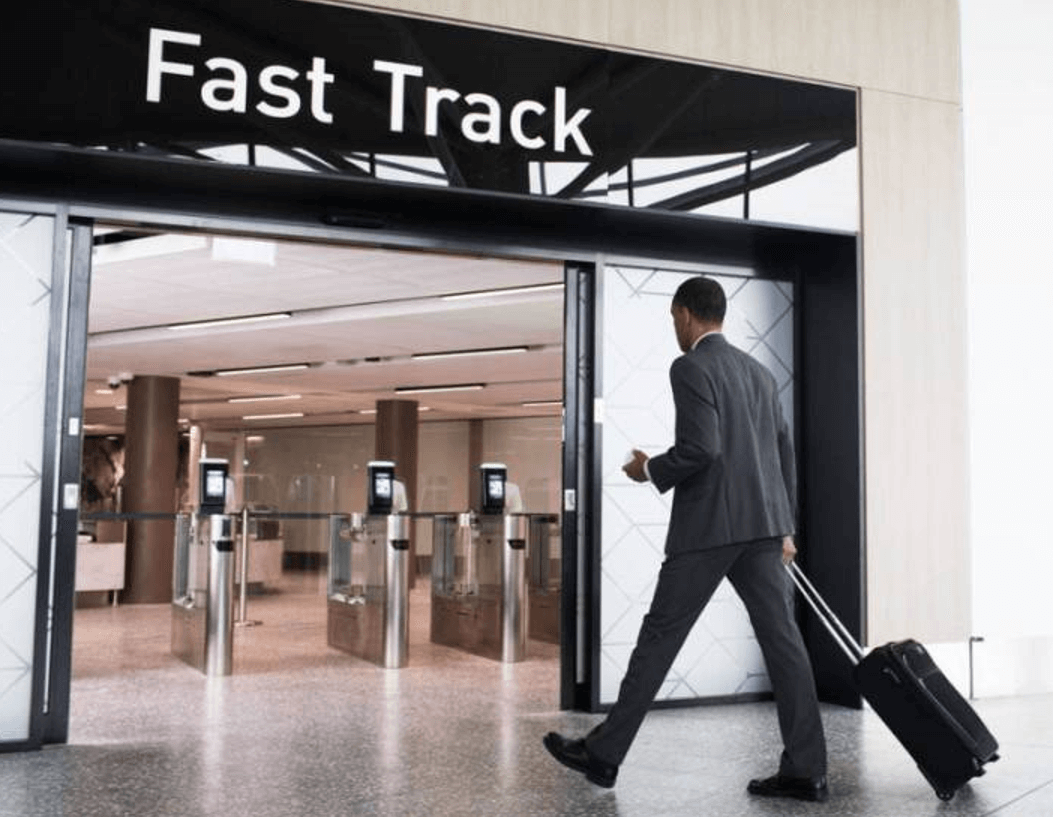
The Department announced on the 4th of November 2022 that a new Ministerial Direction for prioritising skilled visa applications has come into effect as of 28th October 2022.This new Ministerial Direction will cease the Priority Migration Skilled Occupation List (PMSOL), as sectors that had occupations on the PMSOL also had a critical shortage of many other occupations that weren’t on the PMSOL. With the new Ministerial Direction more occupations within these sectors will be processed faster and more efficiently!
The Skilled Occupation List (SOL) remains active. You can view the summary version of Australia’s current Skilled Occupation List (SOL) via ‘Step 1’ in the Member’s Area. Note, the SOL is a permanent part of Australia’s migration program and as such remains in effect indefinitely.
The new Ministerial Direction states the following:
This Ministerial Direction is temporary and may change as Australia recovers from the pandemic. The Government and the National Skills Commission will continue to monitor the impact of COVID-19 on the Australian labour market and assess Australia’s skills needs as they evolve and new sources of data emerge.
There has been no additional changes during the month of November 2022 to the Ministerial Direction. Strengthened labour market testing will continue to allow numbers of ‘sponsored skilled workers’ to migrate to Australia to fill urgent skills needed in critical sectors, helping to create Australian jobs and rebuild Australia’s economy.
This bulletin segment will be updated with the most up-to-date information when Ministerial Priorities change.
The Priority Migration Skilled Occupation List (PMSOL) was a temporary list that identified 44 occupations. Even though the PMSOL is no longer active, the occupations on this list still remain critical in supporting Australia’s economic recovery from COVID-19. The list is based on expert advice from the National Skills Commission and in consultation with Commonwealth departments.
As of 27th October 2022, 44 occupations were on the PMSOL including (ANZSCO codes):
It is important to reiterate, that even though the PMSOL is no longer active, the above occupations continue to remain critical in supporting Australia’s economic recovery from COVID-19 and international border closures.
The Results of the August 2021 census were made public on 12th July 2022, and revealed that Australia has become a majority migrant nation, as the census data shows for the first time that more than 50 per cent of residents were born overseas or have an immigrant parent. Last year’s census counted nearly 25.5 million people, including 1 million new residents.
As of 9th September 2022, people entering Australia do NOT need to provide evidence of Covid-19 vaccination status. Additionally, people leaving Australia will NOT be asked to provide evidence of their vaccination status. Unvaccinated visa holders do NOT need a travel exemption to travel to Australia. It is however important to remember that airlines, vessel operators and other countries may have specific requirements that travellers need to comply with.
Please see the list of vaccines that are recognised by the Australian government for travel purposes here. Fully vaccinated visa holders should also check Australia’s travel requirements prior to departure.

Demand for the health professional cohort increased by nearly 50 per cent and nearly a third of all Australian sectors are facing worker shortfalls in 2022
Australia is facing “staggering” skills shortages, according to a new National Skills Commission report, which shows that occupation shortages have doubled in 2022 as the labour market has tightened.
The number of occupations struggling to fill positions has jumped from 153 to 286 over the year, meaning nearly a third of all Australian sectors are confronting serious worker shortfalls.
Job vacancies have grown more than 40 per cent in the year to August 2022, reaching 309,000 jobs, according to the report.
Of the 20 largest employing occupations, more than half now face serious labour shortages.
Occupations with the largest number of vacancies included technicians, professionals, machinery operators and labourers, as well as community and personal service workers.
The federal government said Australia’s skills shortages were the second highest in the OECD.
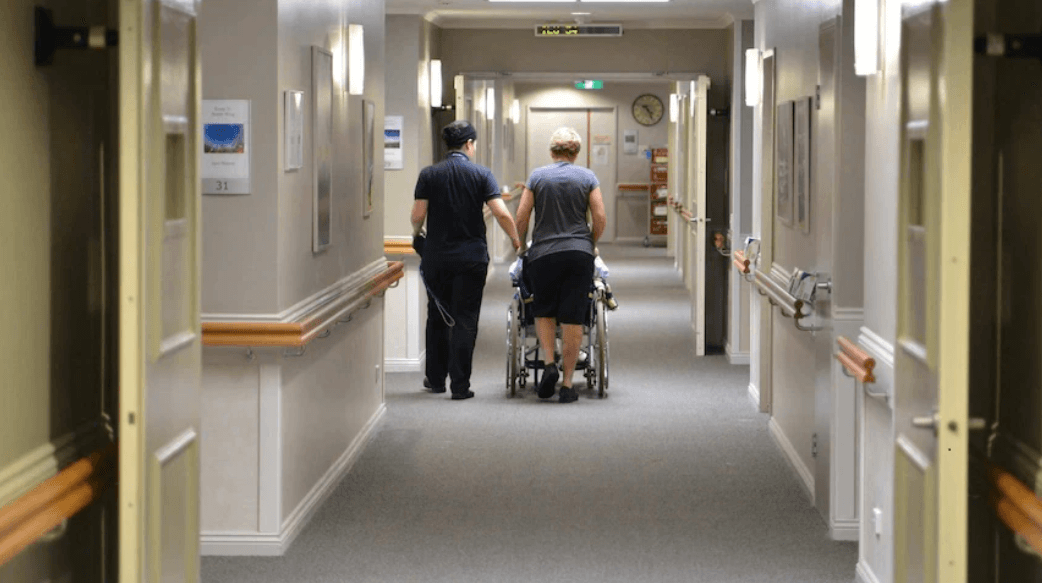
The health and social assistance industry accounted for the largest share of people who changed jobs in the year.
The quarterly average to June 2022 shows registered nurses were by far the most in demand, with 9,266 jobs vacant.
This follows a broader trend among other health professionals, such as general practitioners.
Demand for the health professional cohort increased by nearly 50 per cent in 2022, the largest increase of any sub-employment group.
“The result appears mostly driven by the impacts of the COVID-19 pandemic,” the report said.
It said the “Health and Social Assistance industry accounted for the largest share of people who changed jobs” in the year to February 2022, at more than 12 per cent.
It quotes a survey showing more than 20 per cent of frontline healthcare workers increased their unpaid hours at the peak of the pandemic.
The commission predicts things could get worse. As the country’s population ages, there will be high demand for health professionals.
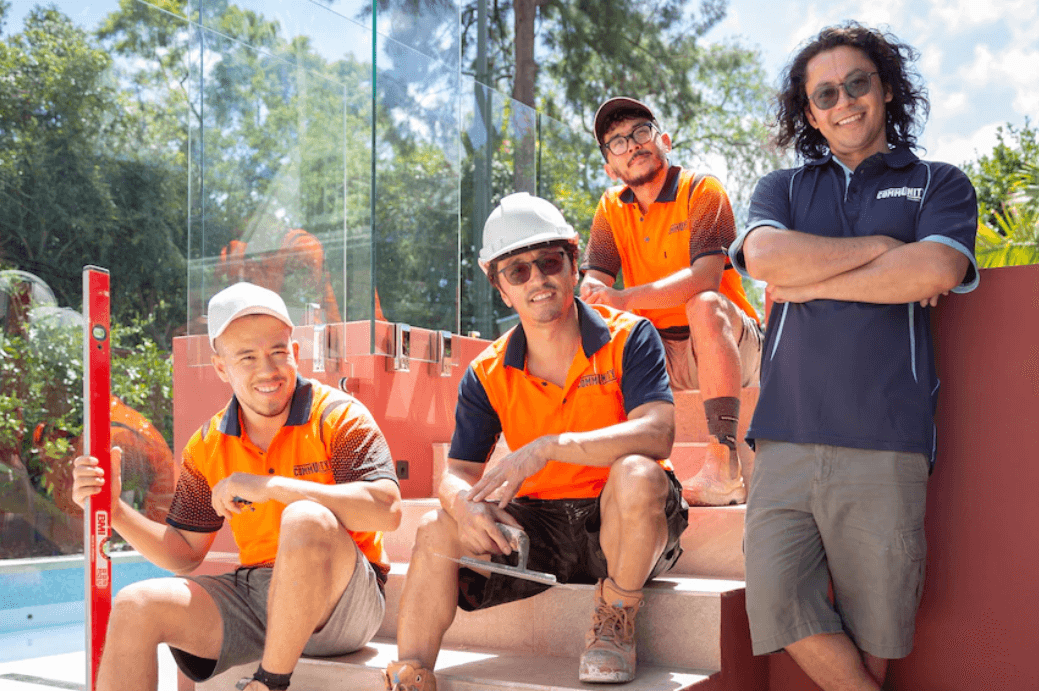
Nearly 50 per cent of trade and technician jobs had a shortage of workers in 2022.
Of the broader sector groups, technicians, trade workers and professionals had the most shortages as a proportion of the workforce.
Nearly 50 per cent of trade and technician jobs were in shortage in 2022. For professionals, it was about 40 per cent.
The commission said shortages in both had been persistent over time, suggesting Australia’s tightening job market was not the only explanation.
It said service industries, including professional, technical and scientific, health care and education, were among Australia’s fastest-growing industries, adding to demand.
Failure to identify shortages
Jobs and Skills Minister Brendan O’Connor said though the pandemic exacerbated issues, shortages existed prior.
“We’ve failed to identify existing shortages and forecast areas of demand in the labour market,” he said.
“The staggering jump in occupations listed reinforces the urgent need to tackle skills shortages.”
The federal government has said it will establish a new agency, Jobs and Skills Australia, to fix the problem.
Earlier this year, the government also announced it would make 180,000 more TAFE places free.
Mr O’Connor said he would not rule out a number of further measures, including making more tertiary qualifications free, if necessary.
“I think everything has to be on the table when it comes to supplying the skills and labour we need.”
Mr O’Connor also criticised the former government’s migration settings, saying they had hamstrung attempts to plug shortages.
His government announced a large increase to Australia’s permanent migration earlier this year.
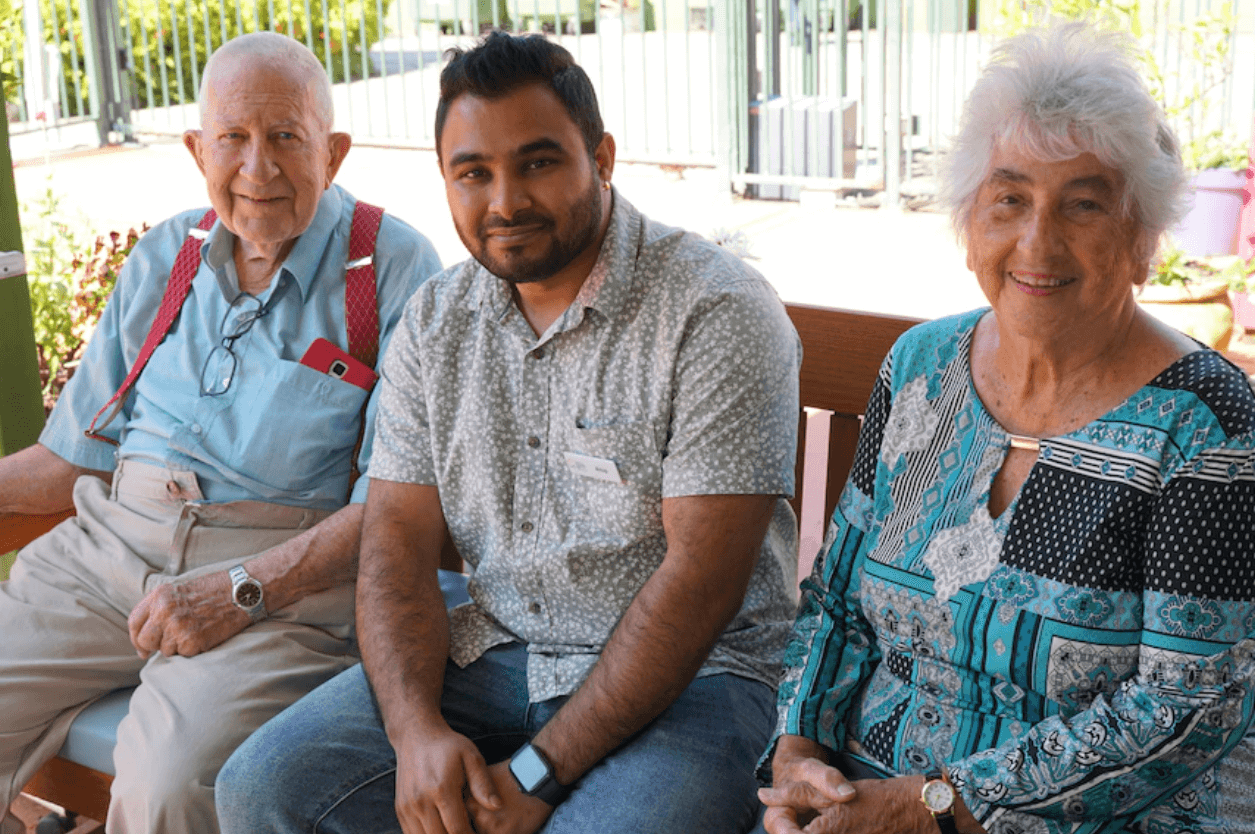
A New South Wales aged care organisation has reached a unique agreement with the federal government to help address severe staff shortages, which it says could become a model for other businesses struggling to find workers.
Sapphire Coast Community Aged Care made the labour agreement to bring on an additional 25 migrant workers every year to address the staff shortages caused by COVID-19 and international border closures in previous years.
Labour agreements are developed between the Australian Government and businesses to allow employers to sponsor skilled overseas workers.
Chief executive Matt Sierp said the hard work in reaching an agreement paid off for the Bega-based organisation.
“We had to employ immigration lawyers, specialists and recruitment consultants to assist us just to get through the red tape,” he said.
“However, it’s all worth it because we have 16 new staff on the ground, and we’ve got an opportunity [to employ] 25 new staff each year under this agreement.”
The organisation said it was the first business in Australia to strike a deal with the government to allow Assistants in Nursing (AiNs) to be part of the program.
Workers plan to settle in the region
Dani Ulibas is one of the newest aged care workers to start under the agreement.
Migrants working for the organisation through these labour agreements will be eligible to apply for permanent residency after two years if the company nominates them.
When the four-year contract ends the organisation can come to an agreement with individual workers to transition them onto full-time positions.
Hanna Bhandari and her partner Anup Tiwari plan to stay in the region after the agreement ends.
“I like Bega, so I want to buy a house here after getting our residency,” Mr Tiwari said.
“The climate, peaceful environment and mountains are similar to what we have in Nepal.”
A ‘good model’ for other businesses
The aged care organisation hopes the model can be replicated by other businesses struggling with recruitment.
Mr Sierp said it would be happy to share its idea with other interested businesses.
“It would be a great model to see elsewhere,” he said.
A spokesperson for the Department of Home Affairs said businesses that wanted to “sponsor overseas workers” could apply to enter a labour agreement if they met certain conditions.
“Labour agreements are available where standard visa programs are unavailable and there is a demonstrated need that cannot be met in the Australian labour market,” the spokesperson said.
“Any Australian business that has been operating for at least 12 months may apply for a labour agreement.”
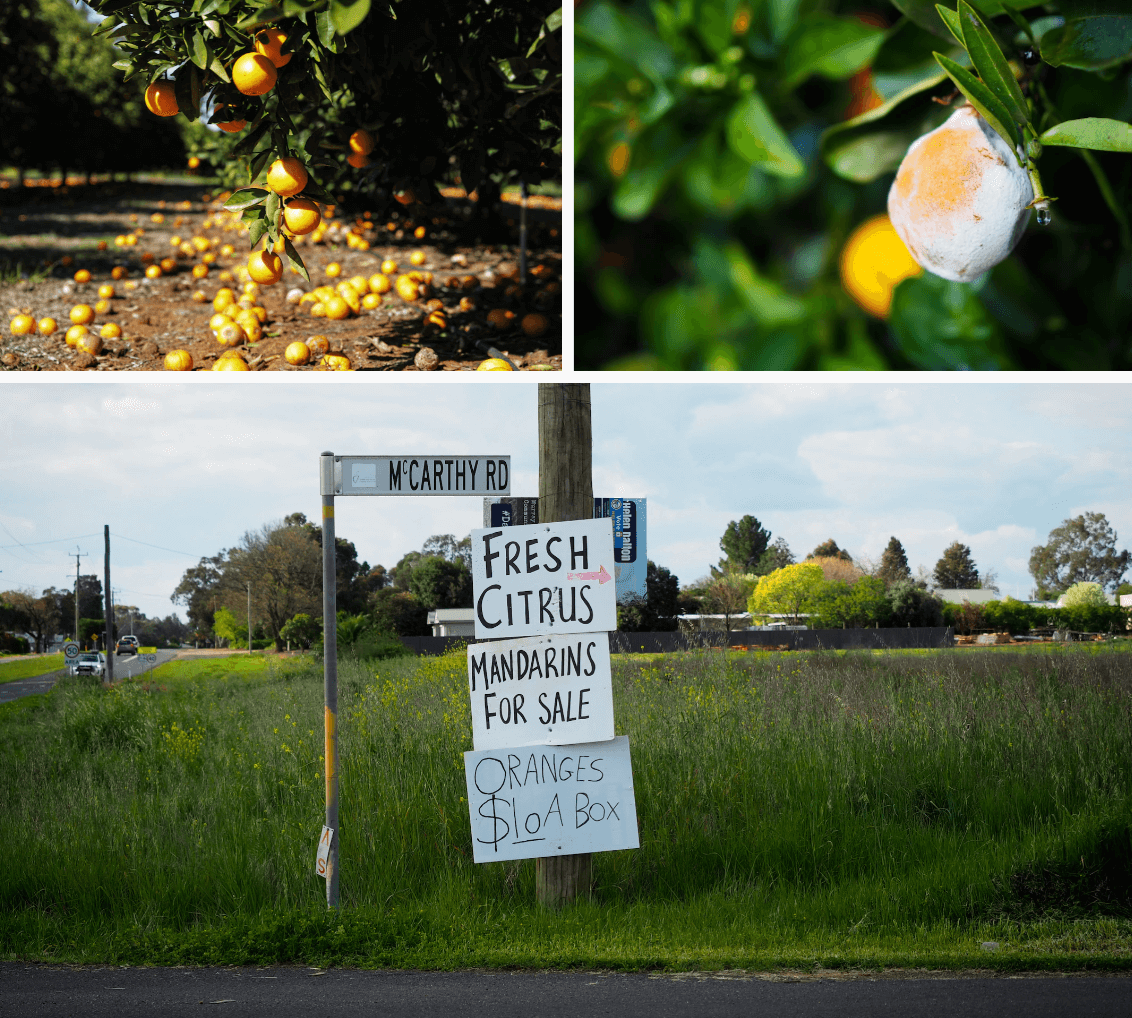
A general manager struggles to walk his orchard rows — the soil in his orchard is carpeted with rotten oranges.
Every tree is laden with ripe fruit that’s bound to fall, unpicked.
“It’s heartbreaking that you have to get up in the morning, you have to face the orchard each day, and you see all this fruit on the ground, all the fruit on the tree, and you think, ‘Why am I doing this, to what end?’ says the general manager of an orchard in the NSW Riverina.
There should have been 200 workers at the vast orchard, picking fruit from its half-a-million citrus trees. But we have found just 20.
The award wage for fruit picking is $26.73 an hour, but he is paying his workers $29.
He says he couldn’t find more workers even when he offered $45 an hour.
“Look, it is hard work. There’s no denying it. I would not do it. It’s very hard. So that would have to be a major factor. But again, if I look throughout our town, we’ve had businesses closed, takeaway shops or mechanics et cetera, that have had to close down simply because they can’t get a workforce. So what hope have we got?”
The general manager says the worker crisis is affecting the mental health of the region’s growers — and his own.
“It gets worse each day, as we see more and more fruit that drops down. I find it difficult to get up in the mornings. I find it very difficult to sleep at night, because you’re constantly thinking ‘what can I do, how can I try and resolve this issue, not only for this year, but for next year?’ You start spiralling downwards into depression.”
Australia is in the grip of a chronic worker shortage.
The Australian Bureau of Statistics says there are 470,900 unfilled jobs.
Job vacancies have jumped 40 per cent in 12 months. The number of occupations suffering shortages has almost doubled just this year – and some of the worst affected professions are critical to the nation’s health and future, like doctors, nurses, teachers and engineers.
There are complex reasons for the shortages: in some sectors, like agriculture, two years of COVID restrictions prevented overseas workers from coming to Australia, and the availability of other, better-paying jobs has deterred locals from taking hard labouring work.
In teaching, child care and nursing, workload and pay have led to high attrition rates.
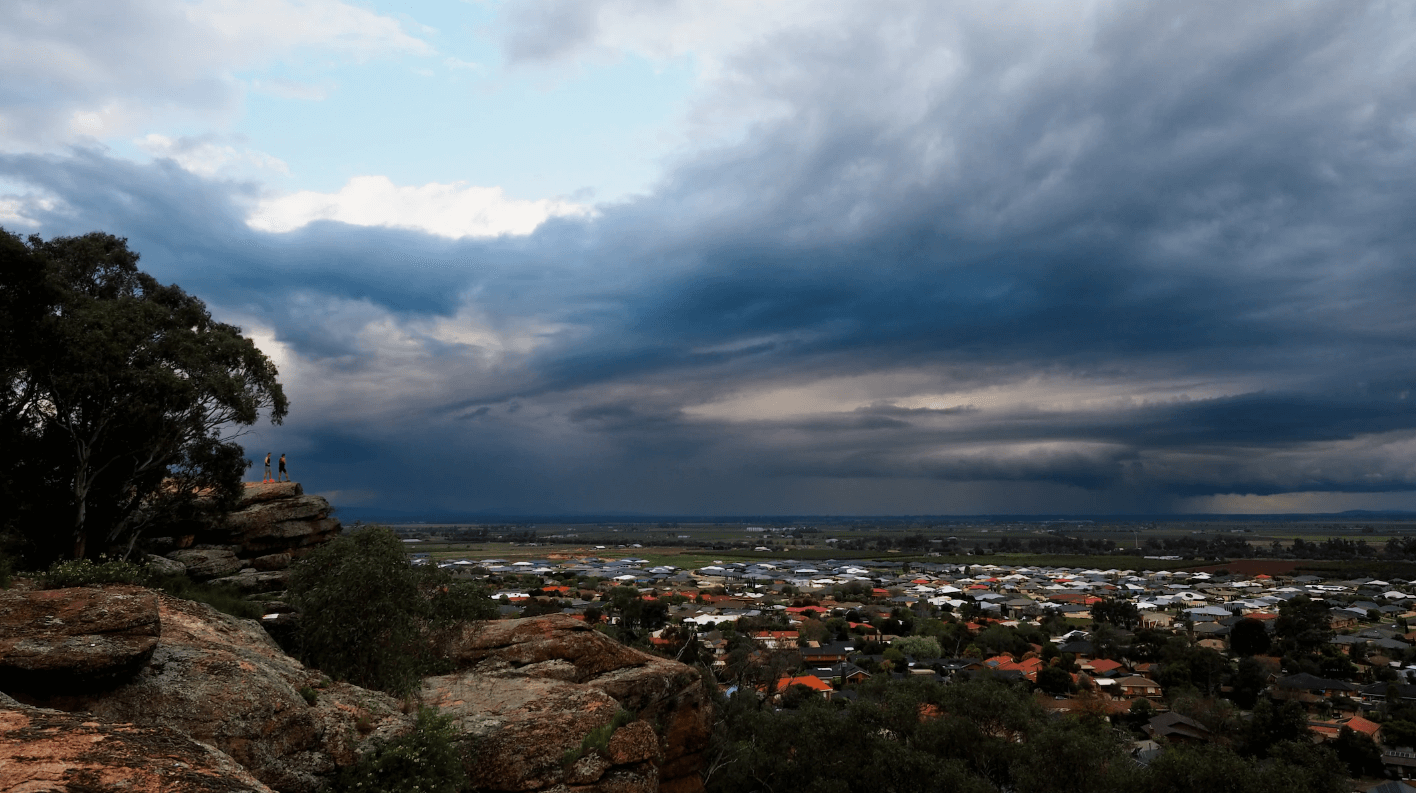
To explore the impact of the worker shortage across Australia, let’s visit a place that’s emblematic of the national crisis: the NSW town of Griffith. The city of around 27,000 people is a hub for agriculture, industry and services, with a major hospital and schools. Its difficulties illustrate how shortages in one sector flow across the community.
One of the Local GP’s is exhausted. He’s embarrassed that his desk is littered with reminders of unfinished work – patients to call, specialists to consult, scripts to write.
“If you see my table, it’s one of the messiest tables you’ll ever see,” he says, gesturing at the pile of notes.
“These are all requests I’ve got to do. At the end of the day, we stay for an hour and a half. I usually go [home at] 7, 7.30[pm], even though we finish our patients at 5.30, 6[pm]. It’s a bit of a hard grind for us.”
“I have not taken a holiday the last two, three years,” he says. “I’m from Sri Lanka, so I have to go back to see mum, who is not well, but I need to find a time when I can go. Sometimes I feel like I am a useless son.”
He feels he cannot leave Griffith because the town’s need is so acute. The clinic is short three doctors, and the waiting list to see him is six weeks long.
The heavy workload for GPs helps explain why the number of medical graduates entering general practice has slumped: from 40 per cent 30 years ago to just 14 per cent now.
“We are busy all these days, not having enough staff, including doctors, nurses, admin staff. We are struggling, really struggling,” he says.
The clinic’s reception staff spend their days telling patients that there are no available appointments.
“It’s the impact of not having enough GPs on the floor. Definitely, it’s just a roll-on effect that affects us all.”
The clinic is in the process of hiring a GP from South Africa.
A paediatric nurse wears the love for her profession on her hand-stitched sleeves: she sews her own nursing tunics out of colourful fabric to brighten the days of her young patients.
But this paediatric nurse isn’t sure how much longer she can last in the public hospital system.
“I definitely don’t see myself staying at the bedside for more than the next couple of years, if I make it that long,” she says.
She works at Griffith Base Hospital, which is short 43 staff from its 490-strong complement.
One solution to the problem – to bring in overseas-trained workers — is painfully slow. There are almost 3,000 registered nurses waiting to have their visas finalised.
The scale of the visa backlog problem is immense.
Home Affairs Minister Clare O’Neil says when the Labor government came into office almost five months ago there were over one million visas waiting to be assessed.
The Coalition cut $875 million from the migration budget before the election.
“We have moved resourcing within Home Affairs to make sure that we are properly putting resources into the visa processing area of the department,” Ms O’Neil says.
“But in addition to that, we’ve committed significant additional resources into visa processing. So the human end of this is people have got fruit rotting on trees and things aren’t showing up on supermarket shelves. And we’ve got nurses working double and triple shifts to help those people. We need to speed up processing times and that’s what we’re doing.”
But why not simply reverse the cut?
“Well, what we’re trying to do is make sure that visa processing gets back on track and that is what we are doing,” she says.
In Griffith, the shortages in one sector feed into others. At a local childcare centre, a single extra staff member would open up an extra 85 childcare places across a week – freeing up parents to work and study. Work vehicles are off the road because of delays at a local mechanic. Crucial farming equipment isn’t getting built because of a shortage of welders.
And at the fire brigade, the shortage is putting pressure on a small group of on-call firefighters, all of whom have other jobs.
It’s a daily struggle for the station’s captain who needs to make sure at least four people attend any incident.
“Look, it’s tough. Particularly, during the work week when people are supposed to be at work. We’re lucky we do have some supportive employers for some of our firefighters that can turn out during the day.”
“We can’t have all our fire fighters during the day because some employers don’t allow it. The ones that do let their fire fighters go out, it’s good, it keeps the station ticking over. But it can obviously be disruptive with them going to and from work regularly.”
At a local earthmover manufacturer, the owner winds a careful path through an industrial labyrinth of lathes, steel offcuts and welding stations to bring us to an enormous piece of bespoke equipment: a GPS-guided earthmover.
He can’t build them quickly enough.
“Our lead times have run out from three to six weeks out to 12 months,” he says.
“We get customers calling us and saying, ‘Look, I’d like to buy one of your earthmovers’, and they’d normally expect us to say, ‘Okay, we can do that in three months.’ When we tell them 12 months, they just cancel the order. They just look for an alternative.”
He doesn’t have enough staff to build them. He says the company could hire another 25 employees.
“It’s been our biggest problem, or our biggest limiting factor as a business,” he says.
“If we get our lead times back to say, 10 weeks, we could probably double the amount of output, and double our turnover.”
He says the stress of the labour shortage keeps him awake at night.
“Often you lie [there] and think about the tough conversation you might have to have with a client the next couple of days about not delivering on time.”
Across Griffith, and around the nation, the cost of the worker shortage can be measured not only in missed deadlines and long delays, but in exhaustion and distress.
Meanwhile, back at the orchard, the row after row of wasted food continues to weigh heavily on the general manager.
“It’s just very difficult to get up in the mornings and see this happening and again, knowing that it can be resolved. We just need a better system,” he says.
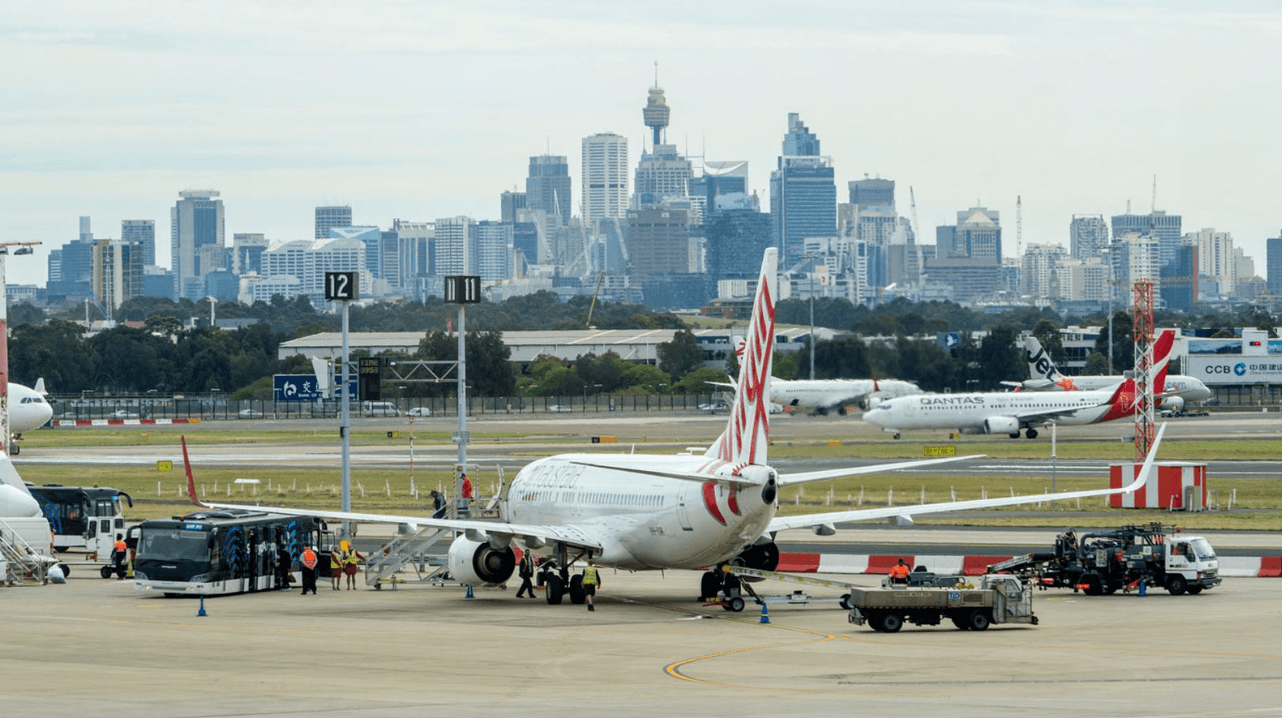
International students and overseas workers are roaring back into Australia, and student visa approvals are now running at pre-pandemic levels, according to new data.
Fears that disillusioned foreign students, after being locked out for two years, would abandon Australia and look to the UK or other countries to study have not materialised.
The surge of approvals will be music to the ears of many businesses, particularly companies operating in the service sector who have struggled to fill vacancies.
Universities will also be breathing a huge sigh of relief with the return of an armada of students who generate a whopping $40 billion annually to the national economy.
“The influx will definitely help some of those workforce shortages, which a lot of businesses have been complaining about,” AMP Capital senior economist Diana Mousina said.
She predicted the hospitality, tourism and administration sectors, who for many months saw their employee pool and customer base gutted, would feel an immediate improvement.
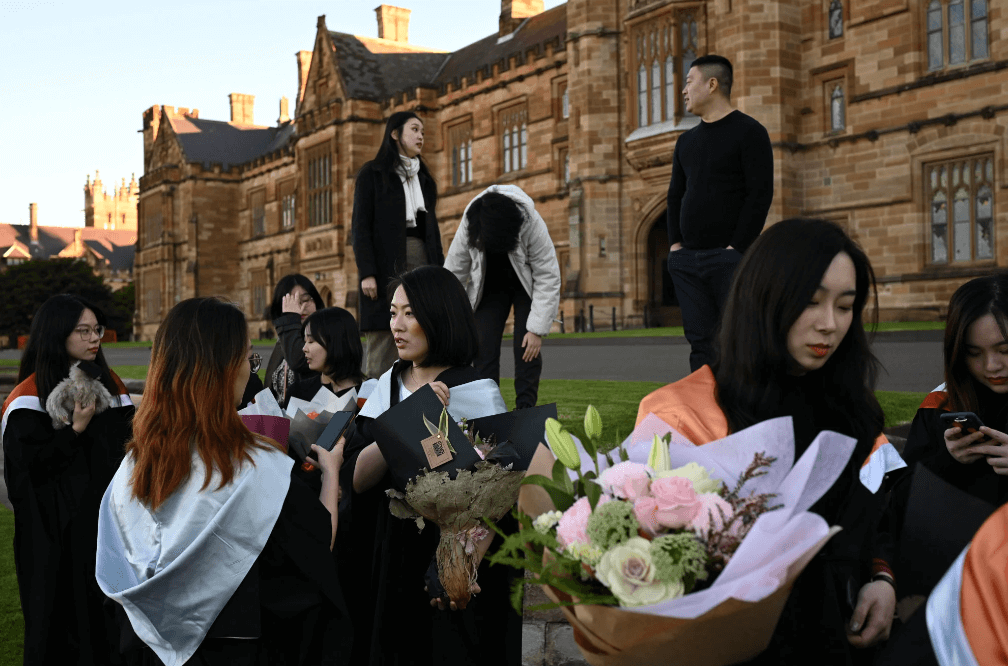
The international education sector is surging back to life with a huge turnaround in just one year in the number of students who intend to study in Australia.
A new survey of the intentions of more than 14,000 international students in 147 countries found that one in five students had changed their minds about where they wanted to study over the past 12 months, and Australia is a winner.
Nearly one in three of those who had changed their minds did so in favour of Australia, while one in 10 said they would go to the UK, Canada, in particular, bore the brunt of the switch.
“During the pandemic many international students chose not to study in Australia as a result of closed borders and lockdown policies,” said Jake Foster, chief commercial officer with AECC Global which conducted the study.
“Australia is a world-class destination for international students, the government has been able to resolve serious visa processing delays which is very positive for students considering studying here.”
Australia’s surge as an intended destination might be in part because of uncapped hours international students can work in place until June next year, with 36 per cent saying they changed their mind because of better job opportunities. Before the move, which was a pandemic measure, students could not work more than 40 hours a fortnight.
Australia’s decision to increase skilled migration intakes and comments by Education Minister Jason Clare that he wanted to see more international students stay on to work here and possibly move into a migration pathway could also be influencing destination decisions with 13 per cent saying there were better migration opportunities in their new preferred study destination.
Phil Honeywood, executive director of the International Education Association of Australia, said it would be interesting to find out how much uncapped work hours had acted as a pull factor in attracting international students.
“But the survey shines a light on the trends we’ve been picking up in terms of the recovery of Australia’s beleaguered international education sector,” Mr Honeywood said.
“In the past when the Australian dollar is low against the US dollar and other currencies then that’s also definitely been a pull factor for students to come here.”
The survey found that Australia was deemed to be the safest country for international students to study, followed by New Zealand and Canada.
It also found a massive turnaround in the subject choice that students intended to enrol in.

There was a 113 per cent increase in students intending to study information and communications technology and a 73 per cent increase in those wanting to study business. Health and medicine, and travel and hospitality also had an increase in intentions.
The study areas that were subject to a decline were engineering (down by 52 per cent), accounting and finance (-33 per cent), humanities (-17 per cent) and education and training (-16 per cent).
Students are attracted to some of the opportunities that come with living in regional Australia, most specifically improved pathways to permanent residency.
However, it’s important to point out that “regional” includes cities such as Adelaide, Hobart, Canberra and the Gold Coast.
Regional covers a range of areas that most people normally think of as being major cities.
Add to that, the additional two-year post-study work and visa entitlements for certain courses, then all the messaging from the Albanese government is that we want international students and we’re willing to provide the flexible policy settings to encourage them to choose Australia over competitor countries.

Kangaroos cruise to record 12th NRL Rugby league World Cup victory over Samoa! Old Trafford, England. November 2022
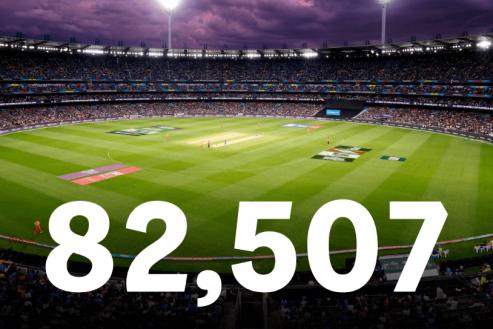
82,507 fans are in the house for the ICC T20 World Cup match between Zimbabwe vs Indian! Melbourne Cricket Ground (MCG), Victoria. November 2022

Australia have completed a thumping 221-run win over England at the MCG to complete a 3-0 series sweep of the reigning world champions. Melbourne, Victoria. November 2022.

Alvaro Bautista took his 16th win of the season at the ‘2022 MOTUL FIM SUPERBIKE WORLD CHAMPIONSHIP’. Phillip Island, Victoria. November 2022

‘Gold Trip’ won the biggest horse race on the Australian calendar, the ‘Melbourne Cup’! Australians across the country were involved in sweeps and cheering on their favourite horse to win. Melbourne, Victoria. November 2022

There was a lot of family fun while celebrating all things arts, culture and environment at the ‘Milbi Festival’! Bundaberg, Queensland. November 2022
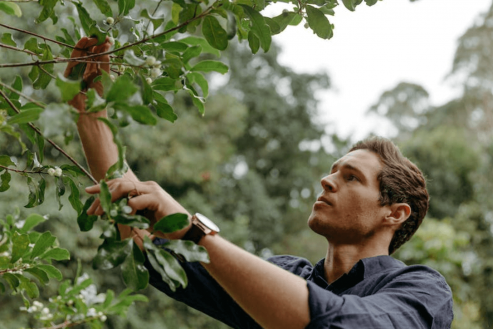
Four action packed days of festival fun with food, drink, music, wellness, art, community, and entertainment at the ‘Caper Byron Bay Food and Culture Festival’! Byron Bay, NSW. November 2022

Described as one of the best sparkling wine festivals in the world, the ‘Effervescence Tasmania Sparkling Wine Festival’ celebrated some of the world’s finest sparkling wines! Relbia, Tasmania. November 2022
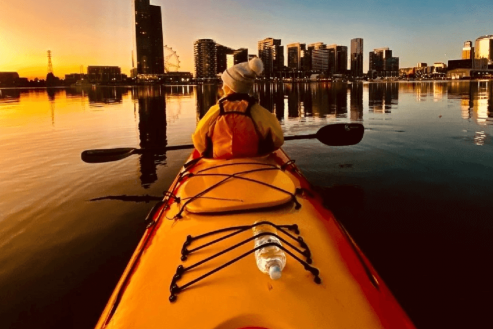
Paddling into a new day, this sunrise was captured on Melbourne’s Yarra River! Melbourne, Victoria. November 2022

Surf’s up and it’s time to catch an afternoon wave! Surfers Paradise, Gold Coast, Queensland. November 2022

The annual red crab migration on Christmas Island is underway! Christmas Island. November 2022

As legislation and travel requirements are constantly changing, we strongly recommend obtaining advice on your individual situation from a Registered Migration Agent. Please click here to book a consultation with one of our Registered Australian Migration Agents, located in Australia.






You can manage your membership and billing method by clicking here
Terms of Service
Privacy Policy
Copyright © 2024 Office of Immigration Australia, a private company registered in Australia. All Rights Reserved.